

What is wine tourism and why is it so big?
Wine tourism is BIG business! Also known as enotourism and vinitourism, wine tourism is a phenomenon that occurs around the globe- but what is it and why is it such an important part of the travel and tourism industry? Read on to find out…
What is wine tourism?
How big is the wine tourism industry, the history of wine tourism, why is wine tourism important to a winery, what are the benefits of wine tourism, new zealand, wine tourism, enotourism & vinitourism- further reading.
Wine tourism, also known as enotourism and vinitourism, is a focused branch of food tourism which is specifically to do with wine. It is all about getting to know the world of wine as you travel. Activities typically include vineyard and winery tours, getting to see the wine production line and (of course!) wine tasting. There are even wine museums you can visit!
As with any type of food tourism, you don’t have to travel particularly far to engage with wine tourism. A proper wine tasting session at your local pub or bar, for example, is definitely a wine tourism activity. Read on to learn a bit more about it….
Put simply, wine tourism (or enotourism or vinitourism) is massive. Enotourism is a big deal across the globe, and it doesn’t show any signs of slowing down in terms of its growth. Statista says , The wine tourism market worldwide was estimated to be worth around 8.7 billion U.S. dollars in 2020, a year in which the entire global tourism industry was hit hard by the coronavirus (COVID-19) pandemic. As forecast, the enotourism’s market size was expected to reach nearly 29.6 billion euros in 2030.

Vins du Monde shared some interesting statistics too, particularly related to where the most wine tourism takes place. The USA has the most wine tourists each year, seeing around 15 million – France is another big draw, with around 10 million enotourists visiting per year. Germany hosts around 7.3 million, and Italy around 5 million. South Africa and New Zealand have much fewer wine tourists each year, welcoming around 0.5 and 0.2 million respectively.

Wine tourism is a relatively new industry, in comparison to winemaking itself. But where there is industry , tourism isn’t far behind. People are curious to see how the world around them works, which is why any form of industrial tourism is popular. Wine drinkers are keen to see how wine is made, to see where it comes from and to try new flavours from different areas. It is the same as avid car lovers visiting a car factory, for example! Wine tourism is said to date back to the early 20th century, when wine routes were developed throughout Germany. There were and are various routes, though none are more famous than Weinstraße, which is the oldest and runs through the Palatinate wine region. The Paris Wine Tasting of 1976 in the Napa Valley, California, was another turning point for wine tourism. French judges blind-tasted French and Californian wines – and controversially, the Californian beverages came out on top. It gained a lot of traction in the media, which started promoting an interest in wine-related activities. Later still and much more recently, in 2004, the film Sideways – starring Paul Giamatti and Thomas Haden Church – showcased two men embarking on a wine tour through Santa Ynez Valley. Following the film’s release and success, the enotourism industry definitely saw a boost!
Wine tourism is important to wineries for many reasons. With cheaper mass-produced wines being much more readily available now, smaller wineries are making less money and business is slowing down. For this reason, branching out into enotourism activities is vital for many wineries. Allowing tourists to visit and pay to taste the wine, see how it’s made and meet the winemakers is a brilliant way of providing income. Wine tourists also tend to spend more than the average traveller – in New Zealand, it’s actually a whopping 52% more.
There are many benefits of wine tourism. As mentioned above, enotourism has a positive impact on wineries and winemakers. It brings in an alternative income, and allows people to share their passion with people who will appreciate it. Wine tourism also introduces people to different wines, meaning wineries may go on to have regular custom from these visitors.
And are there benefits to the tourists themselves? Of course – as with any form of industrial tourism , wine tourism provides an educational opportunity to guests who want to learn about wine, winemaking, individual wineries and so on. It adds a slightly deeper aspect to your trip; it’s something a bit different from simply lounging by the pool!

As a wine tourist on a specific wine tourism trip – like a tour through a specific region – you can experience so many benefits. For one, vineyard and winery locations are usually beautiful. You’ll experience drop dead gorgeous views that will surely take your breath away. From pretty Germany to jaw-dropping New Zealand, wine tourists get a *lot* of the nicest destinations!
With good wine comes good food – that’s just a given. Wine tourists eat well, whether it’s food provided at a vineyard or winery, or at restaurants recommended by tour guides. And good food, as we all know, is one of the best things we can experience in life… Other benefits include finding new wines to enjoy, and making friends with like-minded wine lovers.
The best places to travel for vinitourism tourism
There are plenty of places you can visit to enjoy some of the world’s best wine tourism. Below you’ll find some incredible destinations, tours and wineries perfect for enotourists!
Covering around 102,000 hectares, the German wine country isn’t the biggest but it is one of the most famous. The Riesling is one of the most popular wines in the world! The landscapes of the German wine region are breathtaking, and it is one of the nicest places to experience wine tourism in Europe.
Rheinhessen is the largest area of the German wine country, with some very rare grape varieties; wine has been made here since the ancient Roman times. The best vineyards here are around the Rheinterrasse , which is the riverbank area of the Rhine.
Palatinate is the best region for the famous Riesling wines. It is also *the* region for wine festivals, which are of course a huge hit with enotourists. Not only that, but Palatinate is home to some of the best food in Germany!
Mosel is where you want to go for sweet wines and views that will leave you speechless. The wines are made on heat-storing slate soil, which is really unique and of course fascinating to learn about as a wine tourist.
Wine tours are so popular in California , and a real must-do if you’re in the area and have a penchant for wine. Two areas in particular are incredible for wine tours: Sonoma and the Napa Valley. The best way to do it is on an organised tour . Some include picnics, for some you’ll be on an e-bike, and some tours are combined with hiking! Choose from luxury private tours to big group tours – but whatever you do, if you’re a wine lover vacationing in Cali don’t miss out on discovering the vineyards and wineries of the region.

If you want to see where some of the most famous types of wine come from, then wine tourism in France is for you. From Champagne to Bordeaux, there are so many regions here with wines named after them. And with wine tours, vineyard visits and tasting sessions you can explore them all…
VinoTrip, for example, offer wine tours in the following regions:
- Vallée du Rhône
- Languedoc-Roussillon
- Val de Loire
- Jura.
From wine-and-golf weekends to champagne workshops, there is so much you can incorporate into wine tourism in France. And if you don’t want a whole wine-focused holiday but still want a taste of the good stuff on your trip, there are plenty of day trips you can book!
Wine tourism is a growing industry for the Kiwis, with a whopping 40,000 hectares of vineyard space across the country – as opposed to just 400 hectares in 1960. New Zealand is known as the ‘second home of Sauvignon Blanc’ now. Some of the best places to visit include…
Marlborough, which is the largest of New Zealand’s wine regions. The wine production here is diverse, and the scenery is breathtakingly green. The area is split into three subzones, known as the Southern Valley, Wairau Valley and the Awatere Valley. You can opt for self-guided tours of the region, hop-on hop-off bus tours and fully guided wine tours here . Central Otago is the southernmost wine region in the world, which gives it great kudos among visitors. It is also absolutely stunning, with vines on narrow little terraces located on sloping snow-capped mountains. Some of the world’s best Pinot Noir wines come from here! Book a tour and visit multiple wineries, eat lunch, see the gorgeous scenery and most importantly, taste some of the local wines.
If you enjoyed this article, I am sure that you will love these too!
- What is disaster tourism and is it ethical?
- What is slow tourism explained and why is it so good?
- WWOOFING explained: What, why and where
- What is domestic tourism and why is it so important?
- What is pro-poor tourism and why is it so great?
- Artist Spotlight
- Best New Music
- Short Film Selection
- Thoughts on Film
- MBFW Russia
- Sustainable Fashion
- Watch Spotlight
- Art & Photography
Phantogram Announce New Album, Share New Single ‘Come Alive’
Albums out today: fontaines d.c., sabrina carpenter, spirit of the beehive, magdalena bay, and more, blink-182 release new songs ‘all in my head’ and ‘no fun’, coldplay enlist burna boy, little simz, elyanna, and tini for new song ‘we pray’, the boys season 5: cast, release date & news, the umbrella academy season 5: cast, rumours & potential release date, song of the horse (1971): akira kurosawa’s television documentary, a good girl’s guide to murder season 2: cast, release date & rumours, essentia: aranya’s newest collection serenity and sustainability in fashion, playful & charming: mispoes by mr jones watches, timex present jacquie aiche golden eye collection, fashion spotlight: charles li, nba 2k25: will fiba international teams feature in the game news & updates, nba 2k25 ratings: best players in all positions, an in-depth exploration of betting types, 12 books we’re excited to read in august 2024, why serialized fiction is the future of literature, author spotlight: halle butler, ‘banal nightmare’, breathing life into dance: xi chen’s commanding performance in huxi at the 2024 edinburgh arts fringe, bridging the tangible and ethereal: shuai xu’s artistic journey, exploring soulmate no.1 collection, wine tourism: what is it and how to do it.

If you are an avid traveler who loves to drink a glass of wine now and then, wine tourism might be the perfect type of tourism for you to try. It combines both of these activities into one unforgettable experience, allowing you to explore the world’s finest vineyards and wineries while discovering new cultures.
Every winery on your journey will provide you with unique sensations — scents, tastes, and visuals. Furthermore, you will get to experience wine production first hand and do wine tastings. And, if the season is right, you might even get a chance to participate in harvests!
If we managed to pique your interest in wine tourism and you wish to learn more about it, read on! Below, we explain what it is, why it is so beneficial to do, and how to do it right. Let’s get started!
What Is Wine Tourism?
Wine tourism is a form of tourism that involves traveling to wineries and vineyards to learn more about the wine production process, taste different wines, and enjoy the local attractions. It can also be described as a type of agritourism — a branch of tourism focused on agriculture and nature-based activities.
In other words, wine tourism is an exciting way to experience the world’s best wine regions and learn more about the local culture of the largest wine-producing countries in the world. And if you are not a big fan of wine, why not check Bourbon Bounty hunting instead, or perhaps dive deeper into the magical world of Kosher Blends ?
Why Should You Do Wine Tourism?
There are many reasons why you should consider wine tourism. First of all, it combines two great things: traveling and drinking wine! Secondly, it gives you a unique chance to explore the world’s finest vineyards and discover new cultures. And lastly, it will help you discover yourself and understand your true passion and preferences.
Here are some specific benefits you can get from wine tourism:
Learn More About Wine Production Processes
If you have always been interested in how wine is made, this might be the perfect opportunity for you to learn more about it. In fact, visiting a winery is the best opportunity for learning how wine is produced!
Experience New Cultures Firsthand
One of the main perks of touring around the world is getting to know new people, cultures, and traditions. Most wineries and vineyards are located outside of major cities, which means that you will get to interact with locals in an authentic manner.
Take Your Time and Enjoy the Scenery
Another great benefit of wine tourism is that it gives you more time to really explore the area you are visiting. You can travel to many vineyards and wineries, meaning you will be able to take your time and truly enjoy each place on your list!
Meet People Who Share Similar Interests
Since most people who engage in wine tourism have similar interests, this activity is the perfect opportunity for you to meet like-minded people! You might even make new friends!
Discover Yourself
Last but not least, wine tourism can be seen as a self-discovery journey — while visiting different vineyards and wineries, you will get to explore your own personal preferences. This will allow you to understand yourself better as well as highlight your strengths and weaknesses in regard to wine tasting!
How To Do Wine Tourism the Right Way
There are many ways for you to experience wine tourism outside of your home country — however, we recommend that you should do some research beforehand so that you can choose the best option for yourself! Here are some steps you should follow:
1) Choose a Destination That Is Right for You
The first step in planning your trip is deciding where exactly you want to go. Some wine regions , such as Alsace in France or Tuscany in Italy, offer amazing experiences for those who wish to visit a variety of wineries; others such as California offer more opportunities for those who want to do some grape stomping!
Figure out what kind of destination would be best suited for your needs by reading reviews online or asking your friends who have already visited a certain area.
2) Organize Your Itinerary Ahead of Time
Once you have figured out where exactly you want to go, it’s time to start planning your trip! Decide how long and when you want to visit certain parts of the world; then, start planning your itinerary based on these parameters!
Depending on whether you wish to go alone or with a group of friends, decide how many days per week you would like to spend exploring different regions around the world. Then figure out how many days each region will require in order for you to see all of its main attractions.
Once this has been done, list each region on its own piece of paper or create an Excel spreadsheet with all of them!
3) Choose the Right Type of Transportation and Accommodation
Once you’ve decided on your itinerary, it’s time to start planning transportation and accommodation. The first thing you need to figure out is where you are going to stay the night. Depending on your preferences, you can opt to stay in a hotel, rent an apartment, sleep in a tent, or rent a guesthouse.
After figuring out where you are going to stay, start planning your transportation. You can choose from a variety of different airlines and prices. Make sure to consider not only the cost of getting to your travel destination but also returning home.
The type of transportation that you choose should be directly related to the regions you want to explore — for example, if you wish to visit a variety of vineyards in France, then taking a train is a great option since it will allow you to explore many different cities! However, if you wish to do grape stomping and winery tours in California, taking a plane from the east coast of the U.S. might be more convenient for your trip!
Wine tourism is an amazing way for you to explore the world and discover new cultures. It combines two fantastic activities: traveling and drinking wine! In fact, some people even say that wine tourism is a better choice than traditional tourism since it allows you to immerse yourself in culture much more deeply!
No matter which wineries you decide to visit, you will surely have a great time. On top of that, you will get a chance to learn more about the world’s finest vineyards while also getting to know yourself better! So, if you love wine and traveling, this type of tourism might be just what you have been looking for!
Photo Recovery Hacks: What to Do When Your Photos Go Missing
Understanding the path of a wrongful death lawsuit, the impact of drug and alcohol use on truck accident liability, online pokies nz, most iconic football matches: the classics revisited, arts in one place..
All of our content is free, if you would like to subscribe to our newsletter or even make a small donation, click the button below.
People are Reading
Uk casino games developers of 2024: the best new entrants to watch, how to use green bali kratom: the complete guide in 2024, artificial intelligence technologies in the online entertainment industry: how does it work in pin up.

- Redditor StillKickinginAZ
"This is incredible"
- Jenny Turner
"This is so awesome! We hired a travel agent for $200 and your AI just spit out almost exactly the same itinerary the agent planned for our honeymoon in Greece!"
Share Itinerary
- Skip to primary navigation
- Skip to main content
Travel to the Wine Countries

What is Wine Tourism? And What type of Wine Traveler are You?
Share this post.
Photo by Andrea Piacquadio
Wine tourism is a rapidly growing industry as more and more people discover the joys of visiting vineyards and tasting rooms. But what exactly is wine tourism? And what type of wine traveler are you?
Wine tourism can take many different forms. For some, it simply means taking a day trip to a winery or two, perhaps for a special occasion like a birthday or anniversary. For others, it might involve planning a longer vacation around visiting multiple wineries in a particular region. And for some hardcore oenophiles, it might even mean traveling the world searching for rare and elusive wines.
There are many different types of wine travelers, from those interested in learning about different types of wines to those who want to enjoy the experience of tasting wines in beautiful locations. No matter what type of wine traveler you are, there are many ways to enjoy wine tourism.
What Is Wine Tourism?
Wine tourism is a type of tourism that involves traveling to wine-producing regions to learn about wine and the wine-making process. It can also include participating in wine tastings, attending festivals and other events, and visiting vineyards and wineries.
During your travels, you may visit the homes of famous winemakers, tour cellars and vineyards, and learn about the history of wine-making in a particular region. You might also have the opportunity to purchase wines unavailable in your home country.
Wine tourism is a great way to learn about different types of wines and how they are made. It can also be a lot of fun, as you get to explore new places and meet new people. Whether you are a casual wine drinker or a serious oenophile, there is something for everyone in wine tourism.
What Type of Wine Traveler Are You?
There are many different types of wine travelers, and the type of wine tourism that you enjoy will depend on your preferences. Here are a few different types of wine travelers:
The Casual Wine Drinker
For the casual wine drinker, wine tourism is all about enjoying the experience. You might visit a winery or two while on vacation, but you are not interested in learning about the technical aspects of wine-making. You just want to relax and enjoy the taste of different wines.
For the casual drinker, a day trip to a nearby winery is the perfect way to enjoy wine tourism. You can taste various wines, purchase a bottle or two to take home, and maybe even enjoy a picnic lunch. If you are traveling to a wine-producing region, such as Napa Valley or Sonoma County, you might want to consider taking a guided tour.
The Gastro-Tourist
For the gastro-tourist, wine tourism is all about the food, then wine. You are interested in learning about how different wines pair with food, and you might even be a home chef yourself. When you visit a winery, you look for an educational experience with wine tastings and food pairings.
If you are a gastro-tourist, you might want to consider taking a cooking class at a winery or attending a food and wine festival. You can also find many wineries that offer special dinners and events that pair their wines with gourmet food.
The Education Seeker
The education seeker is interested in learning about all aspects of wine, from the history of wine-making to the technical details of viticulture. When you visit a winery, you want to take a tour and learn about the wine-making process. You might even be interested in taking a course or two on wine appreciation.
There are many ways to learn about wine, and the type of experience that you have will depend on your personal preferences. Many wineries offer guided and self-guided tours if you are interested in taking a tour. You can also find many books and websites that offer educational information on wine.
Both day-trip and multi-day wine tours are available in many wine-producing regions. These tours can be a great way to learn about different types of wines and the wine-making process, as well as to taste various wines.
The Adventurer
For adventurers, wine tourism is about exploring new places and trying new things. You might be interested in visiting a wine region off the beaten path, or you might want to try an unusual type of wine. You are not afraid to step out of your comfort zone and always look for new and exciting experiences.
If you are an adventurer, you might want to consider taking a wine-tasting tour that includes a variety of different wineries. You can also find many wineries that offer special events, such as barrel tastings and vineyard walks.
The Oenophile
The oenophile is a serious wine lover who knows a lot about wine. You are interested in all aspects of wine, from the history and culture to the science of viticulture. When you visit a winery, you want to learn as much as possible about the wine-making process.
If you are an oenophile, you might want to consider taking a wine-education course at a winery or attending a viticulture seminar. You can also find many books and websites that offer educational information on wine.
An exclusive wine tour is a perfect way to learn about wine and taste various wines. These tours can be customized to your specific interests, and they often include a visit to the vineyards and the winery.
Final Thoughts
Wine tourism is a great way to learn about wine, taste new wines, and visit beautiful places. There is no one-size-fits-all approach to wine tourism, and the type of experience that you have will depend on your personal preferences. Whether you are interested in learning about the wine-making process or simply want to relax and enjoy the taste of different wines, there is a wine tour that is right for you.
Which type of wine traveler are you? Let us know in the comments below!
Related Posts

12 Tips to Enjoy a Wine Tasting Tour Like a Pro

Know the Fundamentals to a Memorable In-Home Wine Tasting

The Most Beautiful Wineries to Visit in Italy

4 Ideas for Private Wine Tastings That Will Knock Your Socks Off
Want some inbox love.
What is wine tourism and how can it be eco-friendly?
Share if you like.
Written by Anneleen Debruyckere, Herost Global Youth Ambassador
Have you ever experienced oenotourism? Also called enotourism, wine tourism or vititourism, this special interest tourism is about traveling with the aim of participating in activities surrounding wine. For example going to a wine festival, visiting a vineyard, or attending a wine and food pairing workshop. Recently, eco-sustainable wine tourism have become increasingly popular.

Knowing more about the wine world
Wine, a product exuding luxury and finesse, yet so simple and authentic. For thousands of years, the consumption of wine has been common routine in many households, especially in traditional winemaking regions. Just like wine itself, the industry only gets better by the years. More and more winegrowers have been opening their vineyards and facilities to public for a behind-the-scenes experience. Moreover, wineries producing organic, biodynamic and natural wines have taken their place in the market, creating a cross between tradition and innovation.
Even though the tradition behind viticulture , or wine growing, can be traced back many thousands of years, its promotion as a touristic product only started some decades ago. Due to a variety of factors including location, climate and farming practices, no vineyard is the same. Every territory receives different influences that, connected to an intangible regional heritage and individual winemaking techniques, make each wine unique. This relates to what the French call “ terroir “. Drinking wine in a fancy restaurant is great, but going to its origins, breathing in the air, touching the soil, understanding specific farming practices and taking in the atmosphere that give the wine its character, that is what truly attracts wine lovers.

The origins of oenotourism
In 1976, British wine merchant Steven Spurrier, organized a big wine tasting event in Paris, informally called ‘The Judgement of Paris’. On that occasion, French judges carried out two series of blind tests: one for Chardonnays and one for red wines including Bordeaux and Californian Cabernet Sauvignons. By and large, France has the reputation of being the world’s foremost producer of wines. Surprisingly, it was a Californian wine that came out on top in both categories. This international recognition gave Napa Valley, where the wine was made, a huge boost. The area then developed as the wine region of California and a a hub for innovation. It also became a popular wine tourism destination since t he local vineyards started promoting activities such as tours, workshops, shows, farm stays and tasting experiences.
Following the model of Napa Valley, winemakers around the world started promoting their wineries in a similar way, for example in Catalonia, Spain. Since Spain had been famous for its ‘sun-sea-sand’-tourism, this alternative was a welcome change, adding cultural enrichment and gastronomic heights to an already successful holiday. In fact, wine tourism brings all the elements of a comprehensive holiday into one. Visiting a vineyard can be exciting, relaxing, educative and surprising all at the same time. From collecting grapes in a painting-like landscape to manually squashing them in a barrel, viticulture is both fascinating and enjoyable.
Beside being educational and pleasurable, wine tourism is also relaxing and wholesome. Traditional vineyards can have this nostalgic and romantic atmosphere. It takes you back in time to the authentic and simple, yet hard-working life of ancient winegrowers. It is an emerging experience invoking all of our senses, which makes it extra remarkable and unforgettable. Who would not want to spend their holiday in a picturesque farm in a rural environment, where you can learn about a unique heritage and participate in a centuries-old craftsmanship?

Towards eco-friendly wine tourism
With increasing concerns over climate change and environmental conservation, many wine growers have taken up the challenge to adopt a more eco-conscious model. Regardless of these issues, it is a whole achievement in itself to modify a centuries-old process and make it fully natural, without handing in on taste or quality. But what exactly is eco-friendly winemaking? Vintners, or winemakers, may have various interpretations. Some just reduce packaging plastic, others avoid chemicals and/or any intrants, while some limit soil exploitation.
Given the fact that wine growing is a soil-intensive practice, going green will inevitably contribute to regional development and assist territory conservation. Good soil is imperative for good cultivation of grapes, so it is naturally a sustainable practice. If wineries decide to expand their business by hosting eco-friendly tourism experiences, this can also be seen as a contribution to regional development. In fact, it creates new income opportunities for farmers through bringing travelers to the countryside where they will directly and indirectly support sustainable rural development and agriculture.
Recently, organic, natural and biodynamic wines have become popular. Based around a specific astronomic calendar, biodynamic agriculture was developed in the 1920s by Dr. Rudolf Steiner. This holistic, ecological and ethical approach includes the principles of organic farming but goes much further. It has recently gained attention. Organic wines are made with grapes grown without the use of artificial pesticides, fungicides, herbicides etc. and in the winery, the use of prohibited additives is restricted. e seek out Natural wines , also called low / minimal intervention wines, do not follow universally accepted principles but a fully natural winemaking process should ban any intrant and artificial technique. For example, synthetic chemical products and filtration are not allowed, as well as the addition of industrial yeasts, sugar or enzymes.
Getting to these stages takes time and research. It is a challenge, but will certainly proof worthwhile once the goal is achieved. Another difficulty is convincing customers of the consistent quality of those wines and the value of a sustainable approach. The concept is quite novel, and it may need some extra time and effort to establish a good reputation in the wine industry.

Overall, a growing number of vineries enjoy welcoming visitors and they might even organize special tours, workshops, farm stays or other associated activities. If sustainably committed, wine farmers will be more than happy and proud to elaborate on their vision and practices.
Read this article: How to grow wine grapes
Do not hesitate to contact us if you are hosting wine tourism / oenotourism experiences and would like to list them in Herost platform.
Latest Posts
Embrace the heart of travel: what is community-based tourism and why we all need it.
- Community-Based Tourism
- Experiences
- Uncategorized
What is a Ryokan? An eco-friendly accommodation in Japan
- Accommodations
Why Community-Based Ecotourism in Cambodia is what you need now
- Attractions
- Destinations
- Local Heroes
What is wine tourism and where can you find it?
- Concha y Toro
- October 31, 2023
Wine tourism, a unique experience that blends the passion for wine with the beauty of wine regions, has become a fascinating travel trend around the world. In this article, we will explore in detail what wine tourism is and how Chile has emerged as one of the leading destinations in this form of travel and tourism.
What is wine tourism?
Wine tourism, also known as enotourism, focuses on highlighting the richness of a specific winegrowing region. Additionally, this type of tourism intertwines with other forms of travel, such as culinary and cultural tourism.
This type of tourism implies traveling to a specific winegrowing region to immerse yourself in its essence. This includes visiting wineries, vineyards, museums, restaurants, and other wine- related activities.
While wine takes center stage, it also provides us with the opportunity to explore the history, culture, and even topography of the region. These aspects significantly influence the wine production and our understanding of this captivating world.
Characteristics of wine tourism
These are some of the main characteristics of wine tourism:
- It is focused on wine, its processes, and qualities.
- It is a variant of culinary and cultural tourism.
- It is practiced primarily in rural settings.
- It is a solid and attractive alternative for tourism.
- It is designed for wine enthusiasts and those newly exploring the world of wine.
Prominent Wine Events and Festivals around the World
The world of wine tourism is full of exciting events and festivals that offer you the opportunity to immerse yourself in wine culture. From harvest celebrations that allow you to participate in grape picking to exclusive tastings at prestigious wineries, there is a wide variety of experiences to enjoy. Some of these events include:
- Beaujolais Nouveau Day: Annual celebration of Beaujolais Nouveau wine, held the third Thursday in November in cities around the world.
- Napa Valley Wine Harvest Festival, California, U. S.A.: Celebrated in September, this festival is one of the most well-known wine harvest events. It includes wine tastings, fancy sit-down dinners, live music, and activities related to the wine harvest.
- Bordeaux Fête le Vin Wine Festival, France: Bi-annual festival celebrated since 1998. It offers the opportunity to discover the Bordeaux and Nouvelle-Aquitaine wines.
- Haro Battle of Wine, La Rioja, Spain: This annual event is held in Haro. It combines religious and pagan traditions with a battle of wine where participants throw wine on each other.
Most Emblematic Wine Tourism Valleys
The charm of napa valley, california.
Located in northern California, it is one of the most iconic wine tourism destinations in the world. With its soft hills dotted with vineyards and a Mediterranean climate ideal for growing grapes, Napa Valley is home to some of the most prestigious wineries in the United States .
The Magnificence of La Rioja, Spain
La Rioja, Spain, is synonymous with winegrowing tradition and winemaking excellence. Its landscapes, characterized by rolling hills and vineyard fields, are a sight to see. La Rioja is known for its red wines and historical wineries that have been producing wine for centuries.
The Picturesque Landscape of Barossa Valley, Australia
Situated in South Australia, Barossa Valley is a destination with centuries-old vineyards, renowned wineries, and a diversity of grape varieties. Wine tastings are a central feature of the experience, and visitors can explore both historic and modern wineries to sample exceptional wines.
The Splendor of the Maipo Valley, Chile
Located in the Metropolitan Region of Chile, it is a wine region that has gained international renown. With its mountainous landscapes, this valley is famous for producing high-quality wines, particularly red wines such as Cabernet Sauvignon. It offers a picturesque setting with historic and modern wineries, terraced vineyards, and a rich winegrowing tradition. Visitors can enjoy wine tastings, vineyard tours, and other similar activities with the Andes Mountains in the background.
Wine Tourism: A Driver of Local Economies
Wine tourism is not only a pleasure for wine lovers, but also a significant driver of local economies in winegrowing regions around the world . Two key aspects that make wine tourism a fundamental economic driver are the generation of jobs and the creation of business opportunities.
Creation of Jobs and Business Opportunities
Wine tourism creates jobs in multiple sectors. From wineries and vineyards to restaurants, hotels, tour guides, transportation, and souvenir shops, the industry creates a variety of job positions. This not only benefits the local community, but also contributes to the region’s economic growth.
Promotion of Cultural Heritage
Wine tourism is a powerful tool for promoting and preserving the cultural heritage of wine regions. Historic wineries, wine museums, and local festivals related to grape harvesting and winemaking play a significant role in preserving the history and culture of a region.
Visitors have the opportunity to immerse themselves in the winemaking tradition, explore local architecture, indulge in regional cuisine, and learn about the cultural heritage of the community. It is not just about tasting the wines, but also experimenting the richness and authenticity of the local culture and history.
Wine Tourism in Chile
Wine tourism in Chile has witnessed significant growth in recent decades. Chile has positioned itself as a leading destination for wine lovers, thanks to its growing wine industry. The infrastructure has improved significantly, with wineries offering tasting rooms, restaurants, and wine-related activities.
Chile has also promoted its wine industry internationally, attracting visitors from all over the world. Sustainability has also played an important role, with many wineries adopting environmentally-friendly practices. In summary, wine tourism in Chile has evolved into a comprehensive and diversified experience for wine enthusiasts.
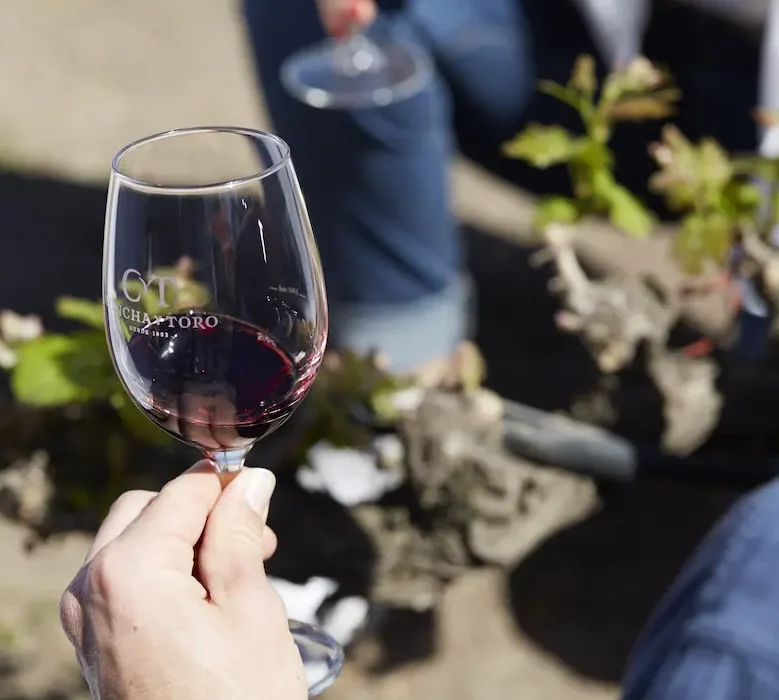
Unforgettable Wine Tourism Experiences
During their visit, tourists have the opportunity to explore different wine regions, visit wineries and vineyards, partake in tastings, and enjoy wonderful landscapes.
Wine tourism offers a wide variety of activities related to the world of wine and viticulture. These activities may vary by wine region, but some of the most common include:
- Winery and Vineyard Visits: You can explore winery and vineyard facilities, where you will learn about the winemaking process, from grape harvesting to fermentation and bottling.
- Wine Tastings: A core part of wine tourism , where you can try different wines, learn to appreciate their nuances, and discover your personal preferences.
- Vineyard Tours: Strolls through the vineyards to learn firsthand about the vines and the cultivation process.
- Special Events and Festivals: Some regions organize events related to wine, such as wine harvest festivals, wine fairs , and concerts.
- Overnight Stays: Some wineries offer lodging, allowing you to enjoy a more immersive experience.
- Wine Museums: Some regions have museums dedicated to the history and culture of wine.
- Wine Tours : Trips organized to take you to multiple wineries and vineyards within a wine region.
These activities allow wine lovers and travelers to explore the local wine culture, learn about the country’s history, and, of course, taste a wide variety of exceptional wines. At Concha y Toro we have different Tours , click to see all the options and select your favorite.
Main Wine Tourism Regions in Chile
Chile has a number of wine regions ideal for wine tourism. Some of the main wine tourism regions in Chile that are home to Concha y Toro wineries are:
- Casablanca Valley: With its cool climate and proximity to the Pacific Ocean, this valley is known for its white wines, especially Sauvignon Blanc and Chardonnay. It is a very popular wine tourism region not far from Santiago.
- Colchagua Valley: Famous for its red wines, such as Carmenere, this valley offers a wine tourism experience rich in Chilean culture and tradition. Its vineyards and wineries are among the country’s most prestigious.
- Maipo Valley: Very close to Santiago, this valley is known for producing high-quality red wines, especially Cabernet Sauvignon. It offers numerous historic wineries that are popular destinations for wine tourism.
- Maule Valley: This is the largest wine region in Chile in terms of vineyards. It is versatile in producing different grape varieties, making it an ideal choice for those who want to explore a wide range of Chilean wines.
- Limarí Valley: a wine region located in the Coquimbo Region of northern Chile. It has been gaining recognition in recent years due to its climate particularly suitable for the production of high-quality wines, especially fresh white and red wines.
- Cachapoal Valley: a wine region located in the Libertador General Bernardo O’Higgins Region of Chile. It is known for its production of high-quality red wines, particularly Cabernet Sauvignon, which thrives in its soils and climate.
Each of the above regions has its own winegrowing personality and unique beauty. Whichever region you choose to visit, an enriching experience awaits you in the world of Chilean wine.
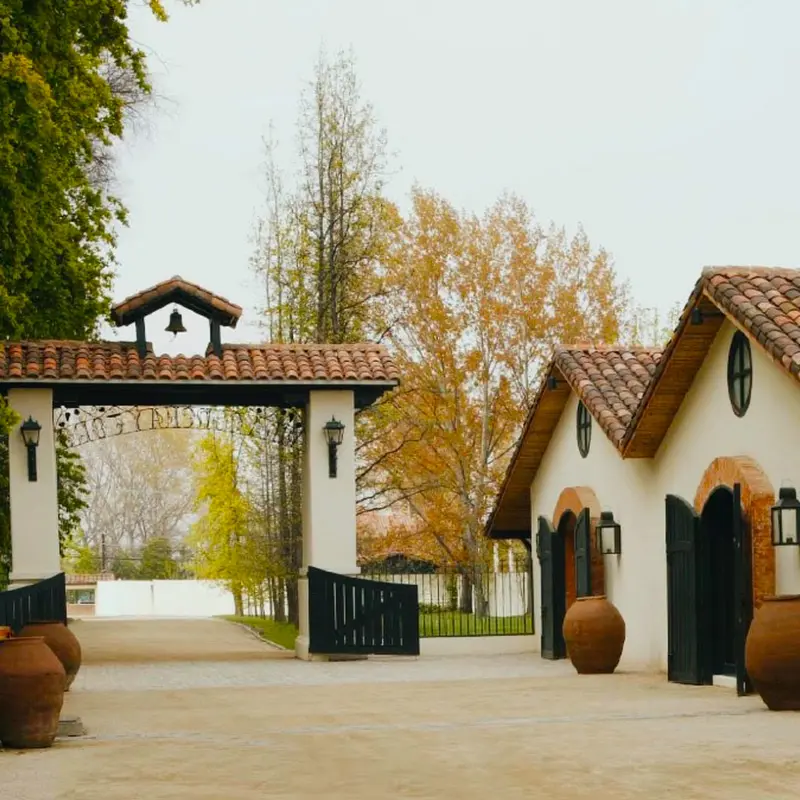
Tips for Planning Your Next Wine Tourism Adventure
Planning a wine tourism adventure is exciting and can be an enriching experience. experience. To get the most out of your trip, here are some of our most helpful tips:
What is the best time of the year for wine tourism in Chile?
The best time of the year for wine tourism in Chile depends on your personal preferences and what you are looking to do. Chile is a wine tourism destination year-round, but there are some considerations you are going to want to take into account:
- Wine Harvest Season (March to April): If you want to witness the moment when the grapes are ready for harvest and experience the atmosphere during the wine harvest, then March and April are the ideal months for visiting. During this time of the year, many wineries organize special activities to celebrate the harvest.
- Fall Season (March to May): Fall is a beautiful season in Chile, when the vineyards take on warm, autumn colors. The weather is nice, and temperatures are moderate, making it an ideal time to tour the wineries and taste wines without the summer heat.
- Spring Season (September to November): Spring is another good season for visiting the Chilean wineries. The vineyards are full of life and flowers, and the weather is pleasantly mild. It is a good time to tour the vineyards and enjoy the natural setting.
- Summer Season (December – February): If you prefer warm weather and outdoor activities, summer is an excellent choice. You can enjoy outdoor wine tastings, picnics in the vineyards, and wine-related events. However, keep in mind that temperatures can be quite high in some wine regions, such as the Colchagua Valley.
During the winter season, tourists often engage in snow-related recreational activities or other seasonal activities. However, it’s also a perfect time for vineyard tours. Ultimately, the best time of the year for wine tourism in Chile depends on your weather preferences and the experience you are looking for. Any time of the year can be a good choice, as Chile offers beauty and wine-related activities year-round.
Tips for Choosing Your Ideal Wine Tourism Destination
- Research wine regions: Research the different wine regions around the world. Each one offers a unique experience, and you will have to decide which one is right for you.
- Climate and season: The time of year you are planning to travel may influence your decision. Some seasons are ideal for the wine harvest, while others are better for enjoying outdoor wine tastings. Research the weather at your destination and choose which season best meets your preferences.
- Other experiences: In addition to the wineries, consider what other experiences you want. Some wine regions offer a rich culinary culture, outdoor activities, festivals, and cultural events. Make sure your destination offers the complementary activities you wish to enjoy.
- Budget: Determine the budget for your trip. Some regions can be more expensive than others, not only in terms of accommodation and food but also regarding the cost of wine tastings and additional activities. Make sure your destination matches your budget.
- Crowdsourcing: Read online reviews and ask your friends and family members who have visited wine regions. Their experiences and recommendations may help you make a more informed decision.
- Flexibility: Keep an open mind and remain flexible in your selection. Sometimes, unexpected surprises and discoveries in lesser-known wine regions can lead to memorable experiences.
Concha y Toro Wine Route
Viña Concha y Toro is one of Chile’s most iconic wineries and offers a unique wine tourism experience in the Maipo Valley, specifically Pirque, located in the Metropolitan Region of Santiago. Visitors can enjoy various wine-related activities and explore the charms of this historic winery. Here are some of the routes and tours we offer:
- Viña Concha y Toro – Pirque Tours & Tastings
- Estate Home Luxury Tours & Tastings
- Culinary Experiences
Viña Concha y Toro offers visitors a complete immersion into the world of Chilean wine, combining history, winemaking tradition, and the beauty of its vineyards. This wine route allows you to appreciate the excellence of the winery and its wines in a spectacular setting.
Do you need to be a wine expert to enjoy wine tourism?
No, you don’t need to be a wine expert to enjoy this wonderful world of wine. In fact, wine tourism is designed to be accessible and enjoyable for people of all levels of wine knowledge. The most important thing is to be open to learning and enjoying the wine culture in a pleasant and relaxed environment.
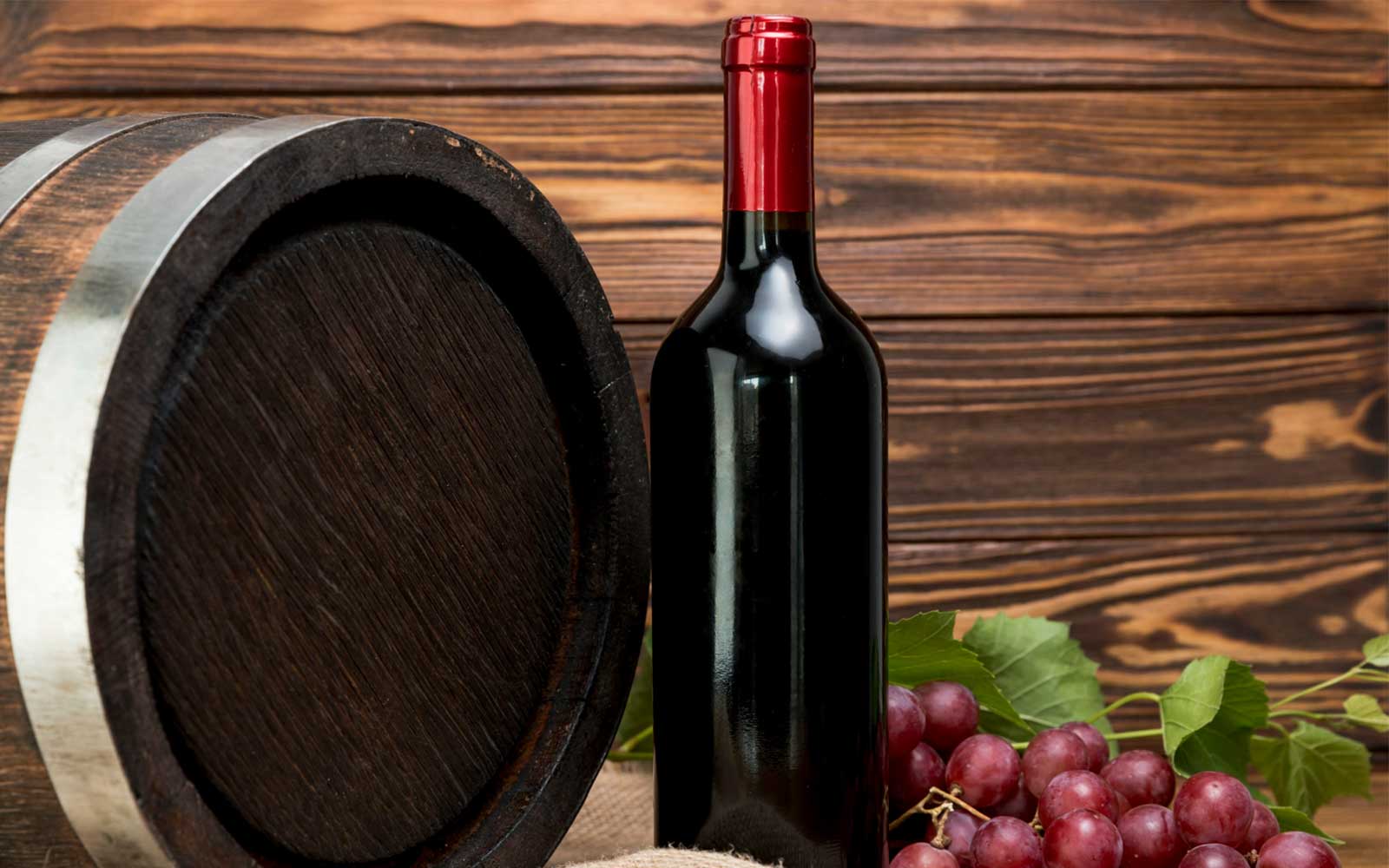
What are the most popular wine varieties in Chile?

Between vintages and aromas: Discover the place where wine is stored
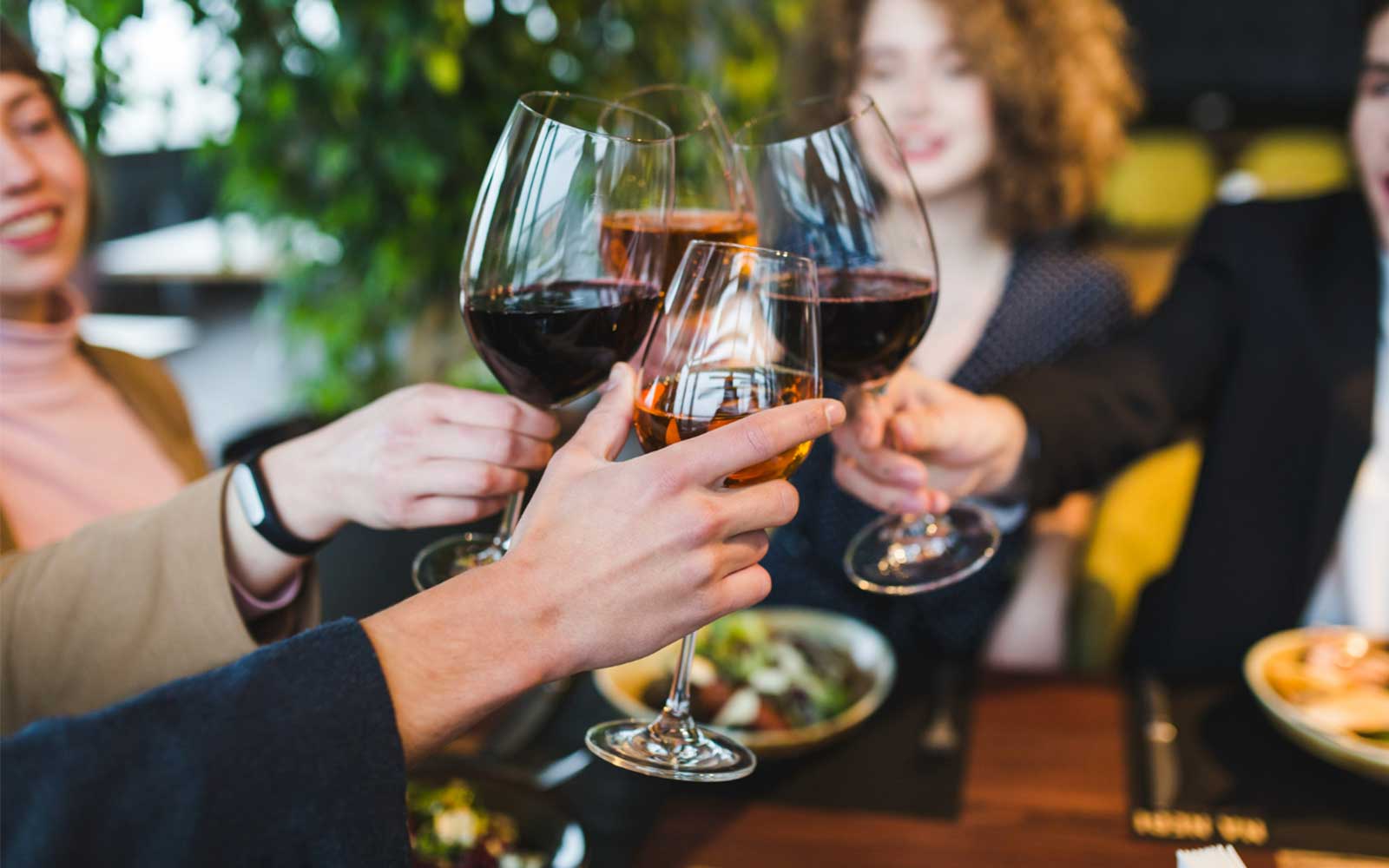
Learn about wine pairing
WANT TO VISIT?
CONTACT US!
If you want to know more about our sustainability initiatives, check them here:

Concha y Toro © 2022 All rights reserved Terms and Conditions Virginia Subercaseaux 210, Pirque
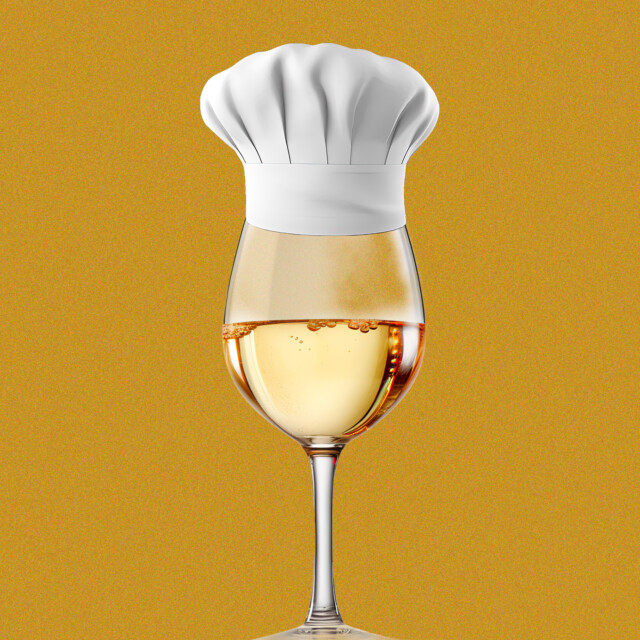
As Consumer Demands Change, Wineries Are Offering More From the Tasting Room Experience
words: Zach Geballe
illustration: Danielle Grinberg
There’s rapid evolution happening in the wine tourism industry, as the experience and expectations of wine drinkers have changed. Fifteen years ago, most winery visits would feature a quick flight of four to six wines, with maybe a few crackers on hand, ostensibly to cleanse the palate. Travelers would rove from winery to winery, often hitting five or more in a single day. For wineries, the revenue generated from tasting fees — if they were even charged — mattered less than bottle sales and wine club memberships.
Yet over time, many wine drinkers have tired of such a simple, same-y experience, and have begun demanding more and more from wineries. Whether from the reservation policies and social distancing mandated by early Covid protocols, or just an ever-escalating pricing structure at the most in-demand wineries and regions, the old way of doing things has never seemed more dated.
These days, tasting wine isn’t enough. When it comes to trying to bring in potential wine tourists, a tasting room, a few pours, and a perfunctory cheese and charcuterie board is woefully behind the times. With tasting room visitation on the rise according to Silicon Valley Bank’s most recent direct-to-consumer report , wineries ignore those demands at their own peril. Now, many travelers want intricate pairings, or even a full-fledged restaurant, and can often expect to spend hours at a given winery, perhaps only visiting one or two per day. Indeed, many of these experiences seem carefully designed to keep guests on the property as long as possible, all in hopes of generating not just a momentary sale, but a lasting relationship with a customer.
A Big Shift
As is often the case, Napa Valley has helped inform this seismic shift in wine hospitality. As prices for tastings grow higher and higher, the guest experience at many Napa wineries has shifted toward one more reminiscent of fine dining than of sampling a few bottles. While reservations were becoming more and more a part of the landscape before the pandemic, the requirements imposed by Covid regulations have become fully codified in the subsequent years, with set times and, in many cases, prepaid experiences replacing a more casual, drop-in atmosphere. Given the eye-watering costs of everything from hotel rooms and meals to the aforementioned tasting experiences, it’s no surprise that the modern-day Napa visitor wants to be waited on hand and foot when they enter a winery.
That said, there’s not always a level playing field between regions. In Oregon’s Willamette Valley, tight restrictions on agricultural land use mean that wineries can’t just open a proper restaurant. But food pairings are permitted alongside a wine tasting. This is used to great effect at Soter Vineyards’ Mineral Springs Ranch property, where the culinary offerings feel right at home at any of Portland’s trendiest restaurants — only with stunning views and, naturally, well-selected pairings from Soter’s production. As Jules Bandy, director of consumer sales and marketing explains, “The Provisions tasting lets us give our guests a 360-degree sense of the property and what makes it a special place, not just for wine.”
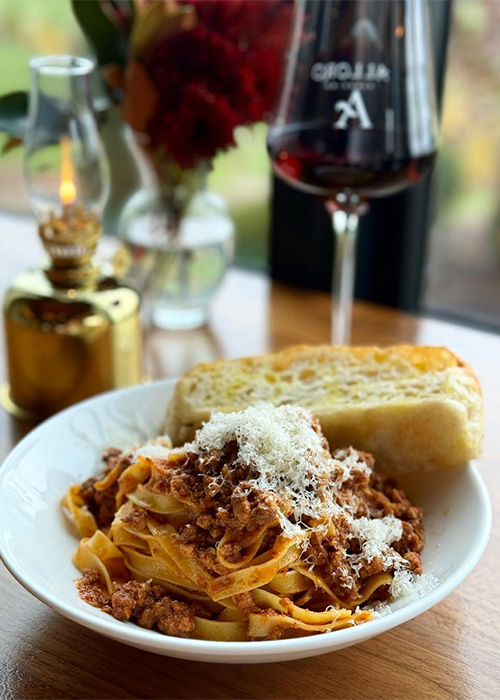
Similarly, Alloro Vineyard in the Laurelwood District AVA has leaned into the winery’s Italian roots to offer a multi-course pairing and tasting experience that is lunch in all but name, but again, the legal restrictions mean that there’s a “wink and a nod” element to the whole thing. Yet drive just a bit closer to Portland and visit Amaterra , which conveniently sits on mixed-zone land, and you can enjoy lunch, dinner, and even a full bar along with your wine tasting experience. Clearly, food programs can be a point of differentiation for wineries, and in a more crowded and increasingly direct-to-consumer-reliant market, anything that brings a visitor across your threshold is a very valuable amenity.
At Walla Walla’s The Walls Vineyards , the tasting room is an opportunity not just to add to the guest experience, but to showcase to drinkers how food-friendly the wines were. “Our food program has evolved in response to what our guests are asking us for,” says general manager Ben Kaehler. “It started as a really well-curated cheese selection … but adding more items has let us showcase just how well our wines pair with American cuisine.” The Walls also benefits from sharing an owner with local restaurant Passatempo Taverna , which has allowed them to work with the culinary team there to expand offerings, boosting check averages and resulting in more lunchtime business from locals.
More Than Wining and Dining
It’s not just limited to food, either. In Temecula, Calif., some wineries offer visitor amenities ranging from swimming pools intended to evoke the French Riviera to blend-your-own-bottle tasting experiences, with huge chunks of real estate dedicated to dining rooms, patios, and the like. Temecula is in many ways a perfect example of this trend: According to the Temecula Valley Winegrowers Association, it sells over 90 percent of its bottles direct-to-consumer and thus must be finely attuned to what visitors want out of a wine trip. That shows up not just in the ways listed above, but in offering better seating options and exclusive menu items and experiences to wine club members, often in full view of non-members. (FOMO is a powerful motivator, it turns out.)
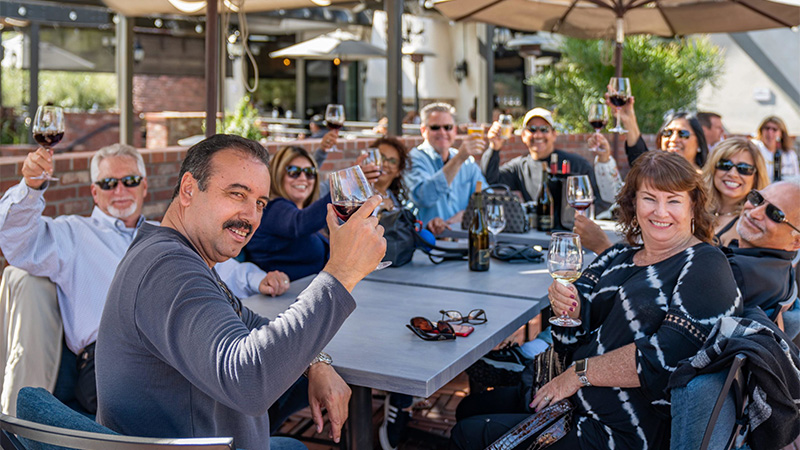
In some ways, this is good for wine, and wineries. As restaurants coast to coast continue to deemphasize wine programs and eliminate wine-focused floor positions, wineries have found that they can best position and promote their wines by delivering wine-centric dining and hospitality experiences to people who are clearly interested in exactly that. Yet it can also be very challenging for smaller and newer wineries to keep up. Hiring a chef, or a full culinary team, is not only a major expense, but often requires significant investment in construction and equipment. At Leoness Cellars in Temecula, for example, the culinary team undertakes a three-day process for making the french fries that they are justifiably famous for — a labor-intensive approach that many wineries simply couldn’t match.
There will, of course, always be a place and an audience for wineries that keep the tasting room experience more tightly tuned to the wines themselves, for reasons of cost, personal preference, or legal limitations. But as getting foot traffic and generating direct-to-consumer sales become more critical in a saturated and competitive wine tourism market, it’s a dangerous time to be a (winery) dinosaur.
This story is a part of VP Pro , our free platform and newsletter for drinks industry professionals, covering wine, beer, liquor, and beyond. Sign up for VP Pro now!
Published: July 15, 2024
- As Consumer Demands Change, Wineries Are Offering More From the Tasting Room Experience | VinePair
- https://vinepair.com/articles/winery-tasting-room-experiences-evolving/
- wbs_cat Wine, tasting room, Wine, wine industry, winery
- Add a Little Sparkle: Reimagining 4 Cocktails With La Marca Prosecco | VinePair
- https://vinepair.com/articles/reimagining-4-cocktails-with-la-marca-prosecco/
- wbs_cat Wine, wbs_type Prosecco, wbs_brand La Marca Prosecco,
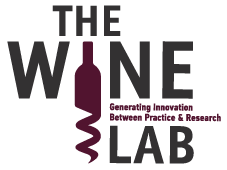
UNIT 1 – Wine tourism: definition, opportunities, implications and strategies
- 4. AT THE MARKETPLACE
- The opportunities of experience-based tourism in wine and food sectors
- UNIT 1 – Wine tourism:…
A NEW TYPOLOGY OF TOURISM
In recent years, wine tourism has been on the rise and represents a robust segment of tourism, because tourists search for more authentic experiences [See UNIT 2 – Wine tourism demand trends ] , travelling to wine-producing countries and visiting wine regions. The second main reason of this success is related to the fact that wine tourism can include other tourism segments, such as cultural, heritage and gastronomy tourism, appealing to more than just wine enthusiasts or wine experts and thus, attracts a large number of visitors (Woldarsky & Geny-Denis, 2019).
Starting from these premises, food and wine tourism represent a new typology of tourism, within the “tourism taste”, that could be indicated as “territorial food and drink tourism” (Hall et al., 2003; Lemmi & Siena Tangheroni, 2015).
Holiday motivation and food attraction (Hall et al ., 2003; Lemmi & Siena Tangheroni, 2015).
WINE TOURISM POTENTIALS
Offering wine tourism goes beyond simply meeting a demand. Wine tourism offers huge potential, creating value both for the territory and wine producers.
- For the territory, wine tourism gives the opportunity to generate wealth in a specific place, promoting its heritage too
- Considering the winery perspective the direct and indireret gains associated to a successful wine tourism business are mainly 8 (Woldarsky & Geny-Denis, 2019)
DEFINITION AND IMPLICATIONS
Wine tourism can be defined as a visitation to vineyards, wineries, wine festivals and wine shows for which grape wine tasting and/or experiencing the attributes of a grape wine region are the prime motivating factor for visitors ( Hall and Macionis, 1996)
It includes a visit to the company, the desire to know the productive process, traditions, history and culture of the wine but also of the territory, the region through images, economic, social and aesthetic values, cultural and natural elements, historical signs rather than consumerism.
Wine tourism is:
- A service experience
- A complex experience, involving the whole terroir ’s attractions
- Related to the wine tourist’s different motivations and profiles
- Nowadays managed through electronic marketing tools
- A tool for regional development (e.g. wine routes)
According to this definition, there are many implications related to wine tourism.
WINE TOURISM TYPOLOGIES
From the offer perspective, wine tourism can be divided in 4 main categories (Karlsson, 2017):
- “Open Door” wine tourism, consisting in opening the cellar’s doors and receiving people for wine tastings and cellar visits
Let’s see the case of Cantine Aperte , the most important wine tourism event in Italy, created in 1993 by the association Movimento Turismo del Vino : every year, in the last week-end of May, the members wineries open their doors to personally meet people. During the years, Cantine Aperte has become a way to travel and discover Italian wine territories, which has seen an increasing number of tourists, wine wonderers and wine lovers visiting wineries from year to year hoping for a unique experience ( www.movimentoturismovino.it )
- “Edutainment” wine tourism, consisting in something more complex and organized than the simple visit to the cellar. The word “edutainment” means in fact a mix between education and entertainment. Some example of “edutainment” wine tourism are: blending session, harvesting workshop, vineyard nature walks, cooking class….
- “Disneyland” wine tourism, consisting in big budget projects, often with mixed contents also including contens not directly related to wine. This is the case of special restaurants or hotels, wine museums, etc
- “Eventification” wine tourism, consisting in one-time events focused on wine. This is the case of wine festivals, gastro-walks, village harvest festival, etc
WHO IS THE WINE TOURIST? (1/3)
Considering the demand perspective, according to Per Karlsson (2017), there are different kinds of wine tourists:
- Wine geek: he wants to know everything about the company, its wines, product processes, etc; for this kind of tourist, wine is the unique purpose of his travel
- Gastro-tourist: this kind of tourist is interested in gastronomy in general; for him wine is one of the reason of his trip
- Passing-by casual tourist: he is not manly interested in wine, but if he visits a wine region he usually decides to visits almost a winery
WHO IS THE WINE TOURIST? (2/3)
According to an Australian research who tried to give an overall general profile of the wine tourist (Chartersa & Ali-Knightb,2002), wine tourists are usually ‘‘couples with no children and those with higher education and incomes in professional occupations,’’ (South Australian Tourism Commission, 1997) and can be divided into 4 main categories:
- Wine lover: he has a comprehensive grounding in wine education, through attending wine and/or tasting courses, reading wine books, watching tv programs about wine, etc. Their motivation as wine tourists is also clearly defined. They are more likely to want to buy wine, to want to learn about wine, and to want to taste wine at the winery
- Connoisseur: he shares all the lifestyle characteristics of the ‘Wine Lovers’ but he has an even more keen thirst for knowledge
- Wine interested: he attends tastings and visits wineries, but he has not any particular experience in wine education. He is interest in learning about storing and ageing wine, but much less concerned with food and wine links
- Wine novice: he attends tastings and visits wineries, but his motivation in wine sector is less focused
WHO IS THE WINE TOURIST? (3/3)
According to Alebaki & Iakovidou (2011), about the wine tourist profile there is a general perspective that “ the ideal wine tourist is male, professional and middle –aged, because they will spend most” (Charters & Carlsen, 2006). However, although younger wine tourists have limited knowledge about wine compared to older ones, they may be more important in the long term. Thus, greater attention needs to be paid, because high satisfaction from the whole wine tourism experience can help in terms to bring them back for return visits (Roberts & Sparks, 2006), create a demand in the long term for specific brands, and built customer loyalty towards individual wineries and their wines (Getz, 2000).
WHICH ARE THE MAIN ACTIVITIES TO DEAL TO PROMOTE WINE TOURISM?
As in many other contexts there is not a single recipe valid for every winery. Strategies and activities depend on the specific projects and location.
In the definition of a wine tourism project, wineries should keep in mind 4 keywords:
Collaboration
If you are all alone no one will be interested in your activity, but if you start collaborating with other wineries, but also with restaurants, museums, hotels, tourist offices, wine shops, etc., the better it will work (Hall et al.,1997; Østrup Backe, 2013); let’s try to create a flexible network with all the stakeholders operating in tourism sector in the area you are located.
Storytelling
Stories are able to appeal both to the logical and emotional cores, meaning they tend to be more memorable than other marketing tools (Pera, 2017). It is not important having a beautiful cellar or a perfectly organised tasting room; visitors will expect that wineries share their stories with them; let’s tell to visitor authentic, clear and memorable stories about your work, your winery and your products. This will be your uniqueness element!
Wine tourism is all about giving people a memorable experience. Experience based tourism, in fact, allows tourists to be fully involved in the visit and to be a leading actor in the choice. It is also able to start up a process, gradually increasing the tourist’s awareness to become an active tourist (Hall et al., 2007; Lemmi & Siena Tangheroni, 2015). Lett’s focus your activity in giving to visitors something that will make them remember the winery and the wines and that will make them talk about it.
Authenticity
The trend to the local and the search for authenticity in food tourism are becoming increasingly important. Tourists want to be different and want to experience places and their food and drinks the same way locals do; (Sims, 2009; Østrup Backe, 2013;). Let’s offer to visitors an authentic experience of your winery and products.
UN Tourism | Bringing the world closer
Product development.
- Rural tourism
Gastronomy and Wine Tourism
- Mountain Tourism
- Urban Tourism
- Sports Tourism
- Shopping Tourism
share this content
- Share this article on facebook
- Share this article on twitter
- Share this article on linkedin
As global tourism is on the rise and competition between destinations increases, unique local and regional intangible cultural heritage become increasingly the discerning factor for the attraction of tourists.
For many destinations, food-making as well as wine-making represent an integral part of their history and identity and have become the key element in the nation’s brand image. Gastronomy and wine tourism represents an opportunity to revitalize and diversify tourism, promote local economic development, involve many different professional sectors and bring new uses to the primary sector. Hence, gastronomy and wine tourism contribute to promoting and branding destinations, maintaining and preserving local traditions and diversities, and harnessing and rewarding authenticity.
The Committee on Tourism and Competitiveness (CTC) of UN Tourism defines Gastronomy Tourism as a type of tourism activity which is characterized by the visitor’s experience linked with food and related products and activities while travelling. Along with authentic, traditional, and/or innovative culinary experiences, Gastronomy Tourism may also involve other related activities such as visiting the local producers, participating in food festivals and attending cooking classes.
Whilst Eno-tourism (Wine Tourism) , as a sub-type of Gastronomy Tourism, refers to tourism whose purpose is visiting vineyards, wineries, tasting, consuming and/or purchasing wine, often at or near the source.
Global Gastronomy Tourism Events
Next in 2024: 9th UN Tourism World Forum on Gastronomy Tourism (Bahrain)
8th UN Tourism World Forum on Gastronomy Tourism (San Sebastian, Spain) 7th UN Tourism World Forum on Gastronomy Tourism (Nara, Japan) 6th UN Tourism World Forum on Gastronomy Tourism (Flanders, Belgium) 5th UN Tourism World Forum on Gastronomy Tourism (San Sebastian, Spain) 4th UN Tourism World Forum on Gastronomy Tourism (Bangkok, Thailand) 3rd UN Tourism World Forum on Gastronomy Tourism (San Sebastian, Spain) 2nd UN Tourism World Forum on Gastronomy Tourism (Lima, Peru) 1st UN Tourism World Forum on Food Tourism (San Sebastian, Spain)
BCC - UN Tourism: Gastronomy Tourism: a driver for development and rural inclusion (July 2023 - in Spanish) BCC - UN Tourism: How do we face the future of Gastronomy Tourism? (May 2020)

Regional Gastronomy Tourism Events
First Regional Forum on Gastronomy Tourism for Asia and the Pacific (Cebu, The Philippines)
Next in 2024: First Regional Forum on Gastronomy Tourism for Africa (Victoria Falls, Zimbabwe)

Wine Tourism Events
Next in 2024: 8th UN Tourism Global Conference on Wine Tourism (Armenia)
7th UN Tourism Global Conference on Wine Tourism (Logroño, La Rioja, Spain) 6th UN Tourism Global Conference on Wine Tourism (Alba, Italy) 5th UN Tourism Global Conference on Wine Tourism (Reguengos de Monsaraz, Portugal) 4th UN Tourism Global Conference on Wine Tourism (Valle de Colchagua, Chile) 3rd UN Tourism Global Conference on Wine Tourism (Chisinau, Moldova) 2nd UN Tourism Global Conference on Wine Tourism (Mendoza, Argentina) 1st UN Tourism Global Conference on Wine Tourism (Kakheti region, Georgia)
UN Tourism-OIV: Innovating in Wine Tourism in the context of Covid-19 (September 2020) Enoturismo post Covid-19 (May 2020)
Other events
Think Tank on Talent in Wine Tourism (Haro, La Rioja, Spain)
Product Development Projects
- Gastronomy Tourism Product Development Project (Ubud, Bali, Indonesia)
The UN Tourism Gastronomy Tourism Product Development Project in Ubud was developed with the Ministry of Tourism and Creative Economy with the aim of growing gastronomy tourism as a pillar of cultural and gastronomic heritage and boost the local economy, create jobs and drive sustainable and inclusive development.
- The Joyful Journey: Discovering a wine region through its wineries (Spain and Argentina)
The Joyful Journey introduces an innovative methodology to identify the existing relationship of the wineries and their surroundings, including their influences on local and regional history, socio-economics and culture. This relationship created the framework for a product to experience Spain through its wineries and the environment in which they have developed. This methodological tool can be adapted and replicated in different regions to help destinations to be promoted through their oenological framework which will also help emphasize other aspects such as culture, history and tradition.
The project was carried out in Spain in collaboration with Affiliate Member Leading Brands in Spain Forum and with the participation of five major Spanish wineries from different wine regions: Galicia, La Rioja, Penedés, Priorato, Ribera del Duero, Somontano, Toledo and Toro.

Guidelines for the Development of Gastronomy Tourism
The Guidelines for the Development of Gastronomy Tourism have been developed by UN Tourism and the Basque Culinary Center (BCC), a UN Tourism affiliate member, as part of its long-term collaboration. The guidelines aim to serve as a practical toolkit to support the development of gastronomy tourism in destinations by providing recommendations on key aspects such as planning and management by national tourism administrations (NTAs), national tourism organizations (NTOs) and destination management organizations (DMOs).
Guidelines for the Development of Gastronomy Tourism

Gastronomy Tourism – The Case of Japan
The report on Gastronomy Tourism – The Case of Japan, prepared with the support of the Japan Travel and Tourism Association (JTTA) and Gurunavi, looks at the awareness of gastronomy tourism as a concept in Japan. Based on a survey with the main players in the country, results show that while gastronomy tourism is little-known, activities around this sector exist across the nation.
The report features 18 different case studies of gastronomy tourism activities in Japan, ranging from local Sake breweries to hotel trains. These examples show how gastronomy tourism has been turned into a development tool, inclusion and regional integration in Japan.
Gastronomy Tourism – The Case of Japan

A Tour of African Gastronomy
So much of a nations’ culture is defined by food. UN Tourism is proud to invite you to join our Tour of African Gastronomy. The rich and endlessly diverse flavours of the continent tell stories and rituals steeped in history. Explore the legacy of centuries of amazing culinary traditions hand in hand with some of the most prominent figures of African gastronomy. Over thirty Chefs will take you on a trip around the wonderful flavours and delicacies whose preparation alone is akin to a performance.
Join us in this tour and check the delicious recipes by African Chefs
Download this book: A Tour of African Gastronomy
A Tour around the World's Gastronomy

Affiliate Members Global Report, Volume 4 – Global Report on Food Tourism
The Global Report on Food Tourism, Volume No.4 of the UN Tourism Affiliate Members’ series of in-depth reports explores the links between tourism and food. For many of the world’s billions of tourists, returning to familiar destinations to enjoy tried and tested recipes or travelling further afield in search of new and special cuisine, gastronomy has become a central part of the tourism experience. Against this background, food tourism has gained increasing attention over the past years. Tourists are attracted to local produce and many destinations are centring their product development and marketing accordingly. With food so deeply connected to its origin, this focus allows destinations to market themselves as truly unique and appealing to those travellers who look to feel part of their destination through its flavours. The report analyses the current situation of Food Tourism, through a survey of the UN Tourism Affiliate Members as well as the reflections of professionals with extensive experience in international organizations, destination management, tourism companies and the training schools.
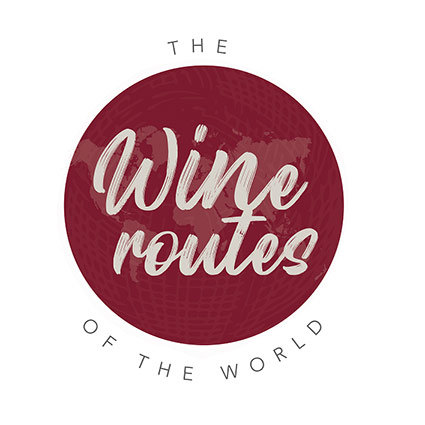
The Wine Routes of the World
UN Tourism and ARAEX GRANDS Foundation are proud to publish this very first guide to the most emblematic wine routes of the world .
The Wine Routes of the World takes the reader through the wine routes of top ten wine producer destinations - Argentina, Chile, France, Georgia, Germany, Italy, Portugal, South Africa, Spain and United States of America – showcasing the history of each country’s wine industry, accompanied by the traditional local dishes and their pairing, as well as the main tourist attractions that cannot be missed while visiting the wine routes
Download this book: The Wine Routes of the World
The Wine Routes of the World by Country:
- Wine Routes of Argentina
- Wine Routes of Chile
- Wine Routes of France
- Wine Routes of Georgia
- Wine Routes of Germany
- Wine Routes of Italy
- Wine Routes of Portugal
- Wine Routes of South Africa
- Wine Routes of Spain
- Wine Routes of the USA
- Best Sellers
- Wine & Food
- Luxury Tours
- Culture & Heritage
- Short Breaks
What is Wine Tourism? And What type of Wine Traveler are You?
Wine tourism is an amazing experience and if you have never been to a wine country, then you will be amazed by a winery, its number of bottles, barrels, the scents, the temperatures, and the vineyards that go on and on without sight. Wine and Winemaking has a long history, deeply connected to the story land and the people involved in its production, and who doesn’t love a story well told? Understanding wine, this secular beverage is more than a trend. Wine drinking is a common interest nowadays, as people tend to be more and more interested in the origin of food and beverages of choice. Wine is a serious business, and since 2016 there is even a United Nations body devoted to the growth and nourishing of Wine Tourism: UNWTO-United Nations Wine Tourism Organization .

A wine traveler isn’t just a regular traveler. A wine tourist might not be a wine enthusiast, and a wine enthusiast is not just a normal wine lover. Forbes states it clearly; there are different types of Wine Tourism. Although one thing is certain, wine bonds them all. Whether you are taking part in the harvest or attending a wine tasting, you are in the position to take home incredible memories and to meet friends for life. So, wh at type of wine traveler are you? Tell me how you drink your wine, I’ll tell you what type of Wine travel suits you best...
The Wine Geek
The name says it all. These types of travelers are wine savvy, connoisseurs, specialists, and all in between. These travelers seek wine knowledge and true wine experiences, and many know the wine game and sometimes define its rules. They usually choose their destination considering the wineries, the varieties, and the wine world, after all, everything in their trip revolves around wine. They also seek private tours with plenty of room for a deep warm conversation with the owner of the winery or the agricultural engineer. The wines of the wine tastings must be premium selection, have also to be bold, distinctive in character, and many times they are part of their bucket list. That's why in the end, and after researching the shipping conditions this traveler knows for carrying the preferred wine back home and sometimes with its own wine bags to pack the most precious findings.
Moreover, there are also a few reminders like the commented tastings with all the technical wine terminology in which a 1-day wine tour would never be enough to satisfy the wine geek inside. How about a 7-day wine tour ? Have you visited the best wineries in Douro Valley? Sure, it is worth a trip to Portugal, since the winemaking tradition goes back then to Roman times, and some of the grape varieties cultivated nowadays are still endogenous. This makes some of the Portuguese wine like none other that you have tasted before. Read more about Wine and other secrets on our previous blog post and get to know the best wine tours in Porto and the best wineries in Douro Valley on this article.
1-Day wine tour
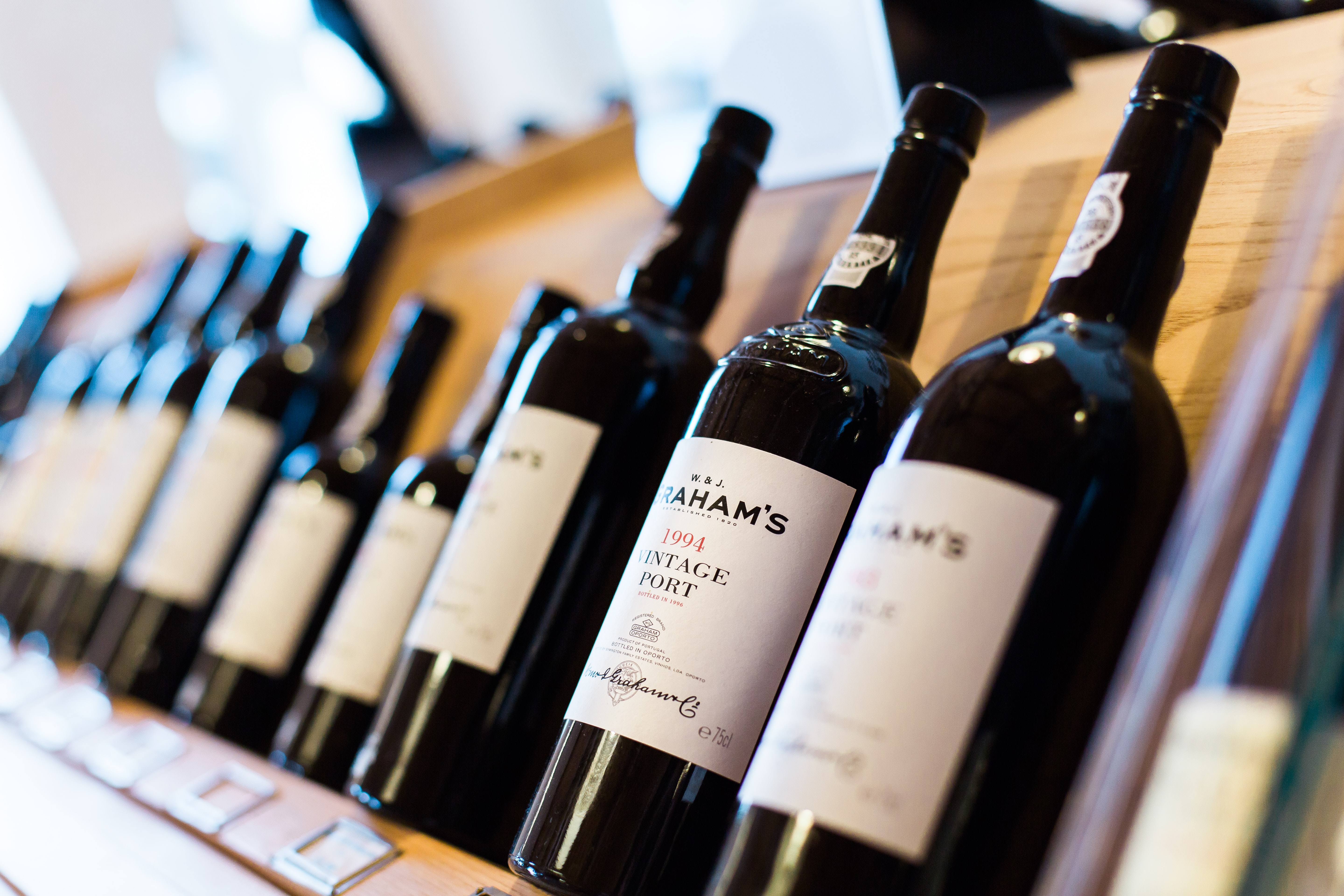
Choose here the selection of the tours of half and one day more suitable for you.
7-Day Premium Tour in Porto and Douro
-1.jpg?width=4032&name=david-magalhaes-Dn389m_qS-U-unsplash%20(2)-1.jpg)
A premium tour in the most famous wine region of the world. This tour was designed for the most demanding and exclusive of the clients. A 7-day journey that will never cease to amaze you every step of the way.
The Gastro-Tourist
![what is wine tourism experience Barbecue_[6483-A4]-1](https://blog.winetourismportugal.com/hs-fs/hubfs/Barbecue_%5B6483-A4%5D-1.jpg?width=1000&name=Barbecue_%5B6483-A4%5D-1.jpg)
For this type of traveler, everything revolves around food, particularly delicious food, plus wine. In fact, the perfect vacations are when wine and food pairings happen at the same time in the same place, no matter where in the world. This traveler chooses the next traveling location instructed by their gastronomic friends. Cheese, wine, and fresh bread are by tradition a quintessential part of our tables all year round, while fresh vegetables and fruit grows are another amazing essential. In addition, even the finest restaurants have their own vegetable garden from where ingredients are picked every day to be part of the daily-defined menu. Furthermore, it is possible to join a cooking workshop, mastered by a renowned chef and take home some of the most renowned Portuguese recipes, this is a great experience since the Gastro-tourist seeks the finest wine and food experiences, both the Michelin Star fine dine experience and the typical traditional flavors. This traveler packs some traditional delicacies and wine to share with family and friends while dining in their own living room back home. Check out this 3-day wine tour with a cooking workshop and private river cruise, book here .
3-Day Tour in the Douro with a Cruise in the Douro River
-1.jpg?width=4872&name=dim-hou-o1STbm8P_IY-unsplash%20(2)-1.jpg)
This is the ultimate, utmost activity for expert Wine enthusiasts. A 3-day stay in a Wine Hotel at the heart of a UNESCO World Heritage Site. A private sailboat cruise. A guided visit through some of the most famous wineries and wine estates of the iconic region.
The Casual Wine Tourist
![what is wine tourism experience Wine_Tasting_Class_detail5_[6473-A4]-1](https://blog.winetourismportugal.com/hs-fs/hubfs/Wine_Tasting_Class_detail5_%5B6473-A4%5D-1.jpg?width=922&name=Wine_Tasting_Class_detail5_%5B6473-A4%5D-1.jpg)
This traveler loves to sip wherever the travel may take them to. When in need of some rest, they prefer to look for an incredible wine bar. Plus, while in Portugal, a must-go should be a visit to the Port Wine Cellars, since this would be a fantastic travel staple in their wine passport. Moreover, the casual wine tourist visits restaurants, attend wine festivals, look for comfortable places for some great food and delicious wine as part of the journey. Might or might not take a bottle home, as happiness is to be on the spot enjoying the moment.
Did you know that?
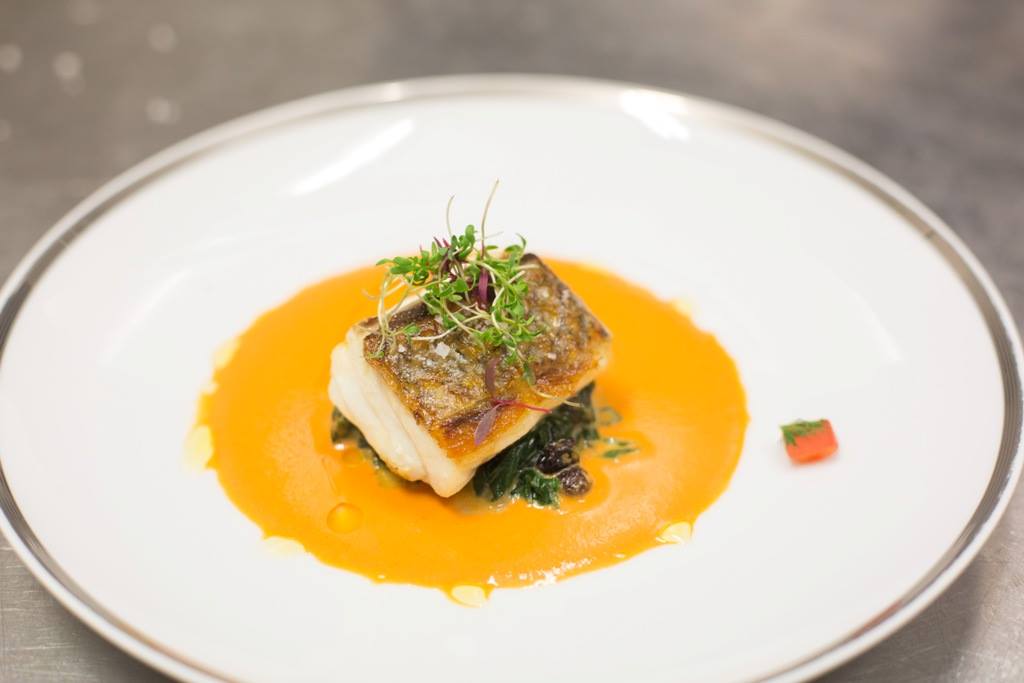
Portuguese food identity is mainly Mediterranean food. Codfish could be our national dish if we really could choose just one. This fish, which we don’t have in our sea territory, is prepared in 1001 ways plus so many more. Amazing isn't it?
Why book now your tour? Because by booking all your tours with us you will have flexibility in the future, plus an acquired "Clean and Safe" seal . Through these unique times, we are available to plan, reschedule, and move your trip around your needs, as always. If your new dates may no longer work with your initial travel plan, a dedicated consultant will be available to tailor and reschedule your time in Portugal according to your needs and preferences, and to assure you that you will have the best and most memorable experiences.
Topics: Wine Tours Wine Experiences Wine Tourism Douro Tours
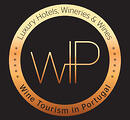
Written by: Wine Tourism in Portugal
Our team of travel, wine and food enthusiasts will share the best tips and advice for an unforgettable travel experience in Portugal.
Share Your Thoughts:
Related articles:.
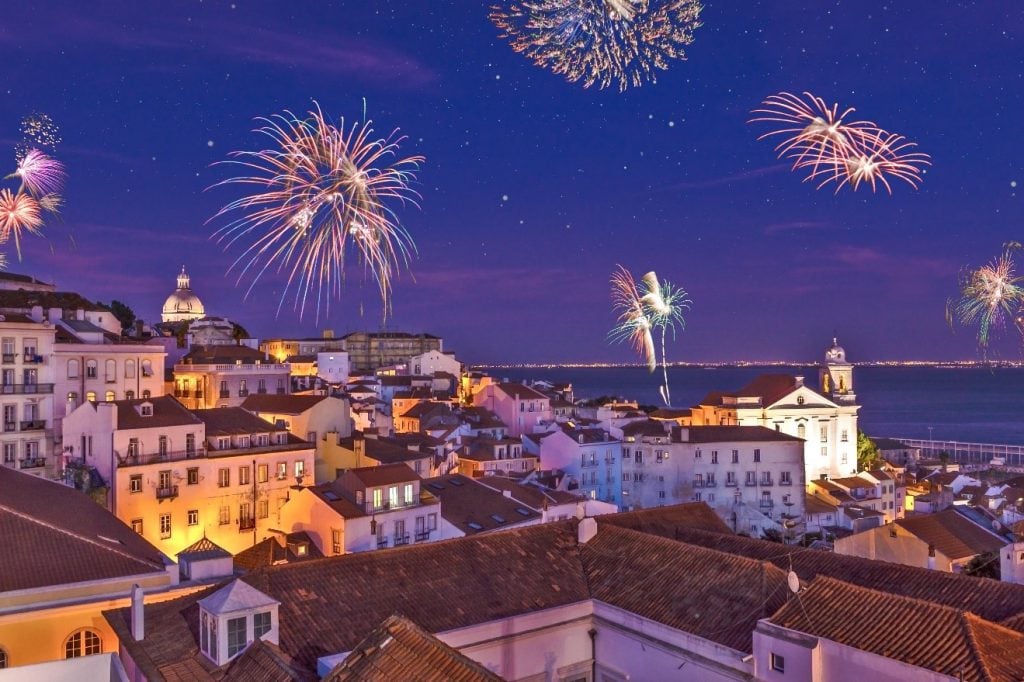
Blog Notifications
Receive our blog articles by email with wine, food & travel advices!

Most Popular
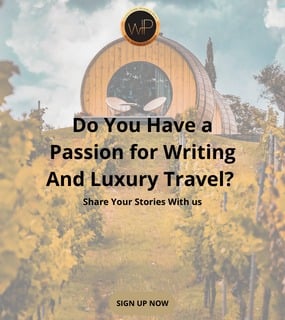
Recent Posts
Posts by topic.
- Wine Tours (191)
- Portugal (94)
- Wine & Food (84)
- Travel (71)
- Douro Valley (69)
- Alentejo (64)
- Travel Portugal (61)
- Lisbon (59)
- Travel Experiences (56)
- Wine Experiences (45)
- Inspiration (44)
- wine and food tours (42)
- Premium Tours
About Us Terms & Conditions Privacy & Cookies COVID-19 Health & Safety Guidelines Flexible Booking
Get in touch:

© 2024 - Wine Tourism in Portugal - Luxury Hotels, Wineries & Wines | All rights reserved

Traveling Without a Passport

What to Expect on a Wine Tour

When travelling across the world, there is always an opportunity to learn new skills, develop a taste for new cuisine, enjoy local experiences and meet new people. This, of course, can all be experienced on a wine tour.
Travel to: France
Whether you’re stopping for a quick tipple while driving through wine regions or joining a specialist, multi-day wine-tasting tour in Europe or other parts of the world, a winery tour is always a good idea – and even better when you have a designated driver!
Before you go, we’ve collected some useful tips to help you understand what to expect when visiting a winery and how to choose a perfect experience for you.
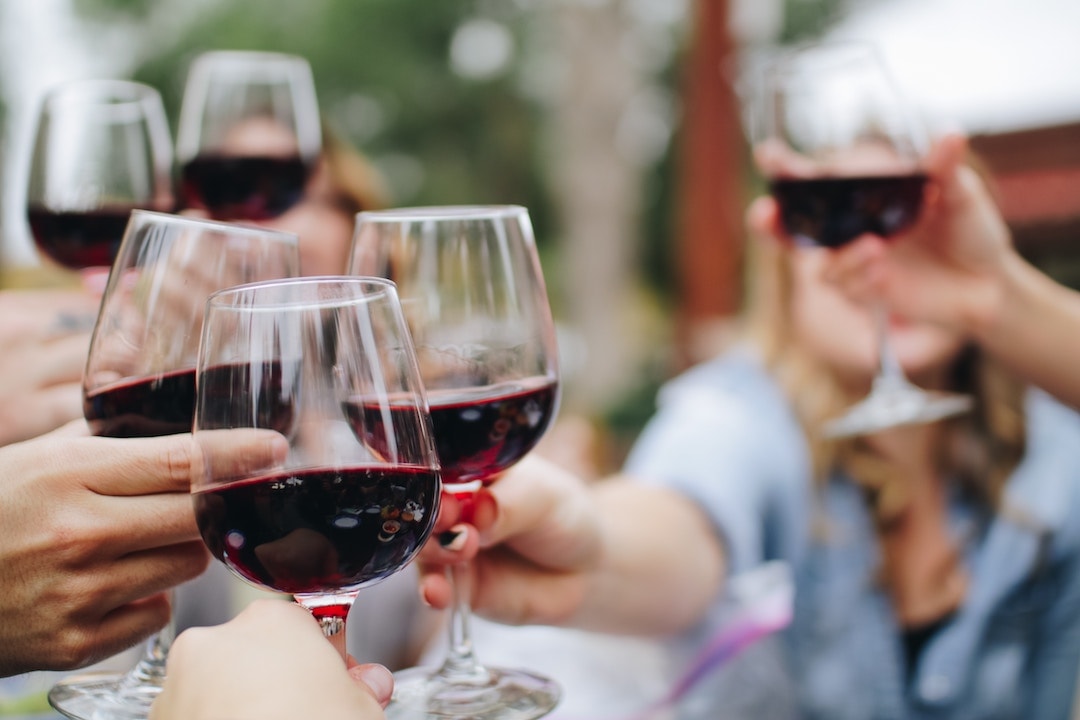
How to choose your winery visit
With so many options across the globe, it can be difficult to know where to start. Naturally, you might be drawn to wineries or wines that you’re familiar with, but travelling also gives you the opportunity to sample new varieties.
Commercial Vs small business?
Europe certainly has no shortage of winemakers, ranging from industrial size factories with generations of family history to small, family-run businesses who produce comparatively minuscule amounts of wine per year, used mainly for local consumption. These are the kinds of wines you’ll never see on the shelf back home and a great souvenir to take back with you (if the bottle makes it that far).
Old world vs new world?
Do some research to understand what wines are typical of the region you’re visiting for the most authentic experience. Many grape varieties have been exported around the globe for cultivation in new lands, but it’s always interesting to get back to the source and understand how world famous varieties found their roots.
It’s also important to note that wines can often be categorised as the old world or new world wines.
See Also: How to See the Most of France on Your Bike
Old world wines often originate in Europe, including the likes of Bordeaux , Chianti, Vermentino, and will usually be made according to strict rules and regulations, being limited to grape cultivation only in certain areas. These are referred to as AOC or DOC in France, Italy and Spain respectively, which can be found on the label.
New world wines, on the other hand, are often the winemaker’s playground, where they make the rules, cultivating varieties outside of their region of origin and often mixing non-traditional cuvees.
It also helps to consider which kind of wine experience you’re more interested in when selecting a winery. Are you a traditionalist or a modernist? Are you interested more in deepening your wine knowledge, or taking a more light-hearted approach and simply supporting a local wine-maker who works with your favourite grape variety? The choice is yours!

Getting there
If you’re driving, simply make sure you have a designated driver and check out the winery’s website for directions. If your winery visit is included on a tour, this bit is easy and no-one has to worry about having to hold back if you’ve chosen your perfect winery experience.
If you’re an independent traveller, it’s always best to call ahead. Larger wineries will conduct group tours at different allotted times throughout the day in various languages, whereas a smaller winery may only be open for a visit that is pre-arranged, so it’s not only a time-saver but also simply courteous to plan ahead.
What to expect on a wine tour
Although the wine tour experience will vary from one winery to the next, it is safe to say that there will always be certain things you can reasonably expect to encounter.
The property
Your tour will usually follow the wine-making process itself, starting with explaining harvest, grape selection, fermentation, ageing and bottling before tasting.
One of the most romantic parts of visiting a winery is gazing out across the endless rows of vines with grapes just waiting to be brought to maturity. This is often where the tour will begin, before heading indoors to the processing area and finally, down to the cellar where you can surround yourself with beautiful wooden barrels and endless rows of bottles.
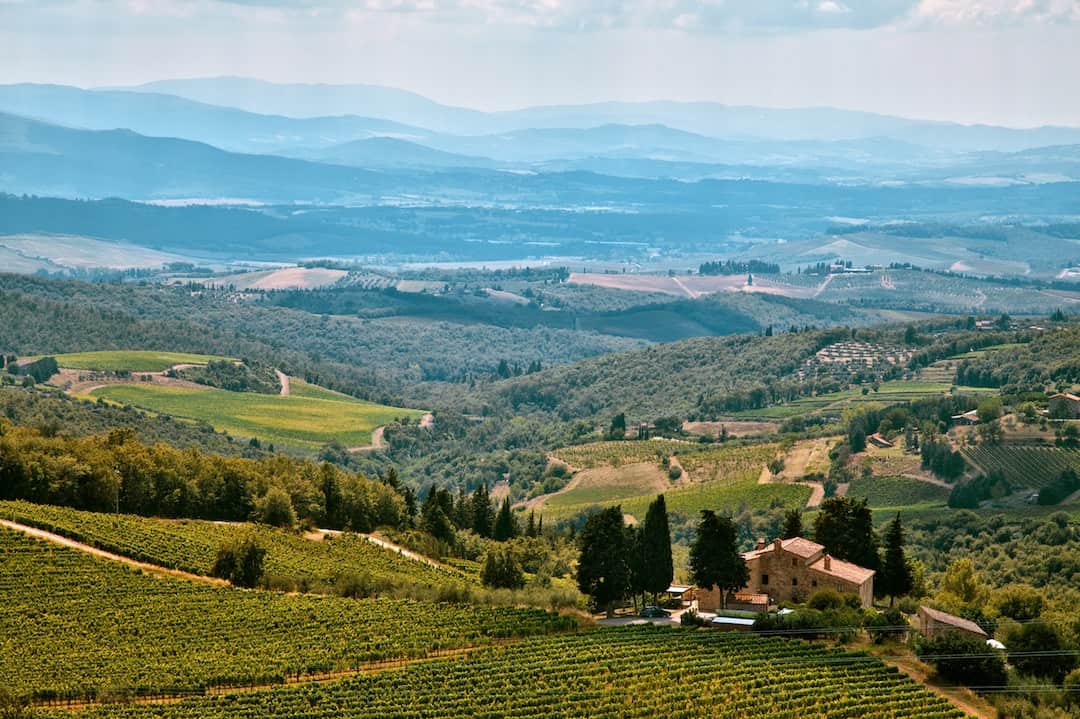
When I started doing wine tours I was interested in learning about the different ways in which the wine itself was produced and the processes involved which impacted the distinct flavors of wines. This level of understanding helped me better appreciate what I was drinking as well as determine what wines I prefer and why. While I was fascinated with the process of wine-making when I first took tours, I am not so interested in that aspect of it now. So I make sure to seek out tours that are organized around things I do like; some tasting with food, a combination of winery visits with other destination highlights, etc. Not every wine tour is the same, so make sure that you find one built around your interests. – Carol, Girl Gone Travel
The wine and the history of the winery
Throughout your visit, you will typically learn about the grape varieties in the region and how wine is made. If you are visiting multiple wineries in the same region, you will usually find this part a little repetitive, but there are often small nuances which differ from one visit to the next.
Winemakers are often following on a family tradition, even at the big wineries like the famous Marques de Riscal in La Rioja, Northern Spain. Needless to say, the family history will feature strongly in your wine tour too.
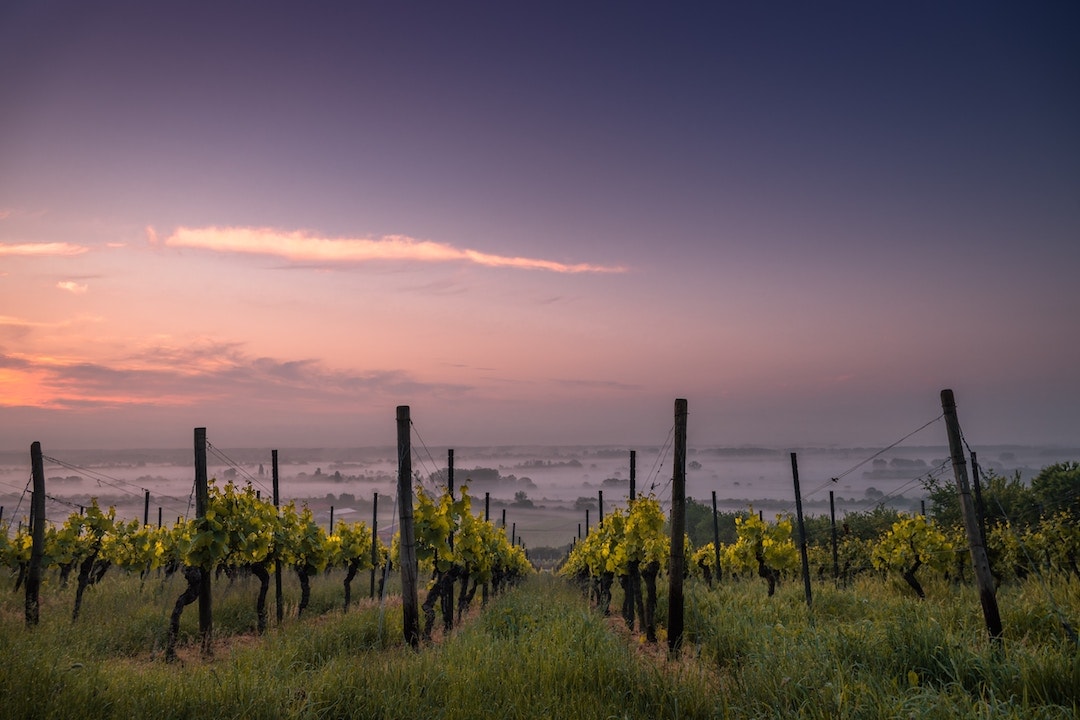
I enjoy how a wine tour fuses tourism and authentic Spanish culture together, to create an immersive experience. In Spain, the wineries I visited were family-owned and operated. It’s truly a way of life and a means of income for Spaniards in La Rioja. It was wonderful to see locals and tourists support them. To anyone interested in a wine tour, I would say go during autumn. The vineyards are the most beautiful and vibrant from September to October! Also, if you’re in a place with multiple wineries, book two in one day. Each wine tour has a different vibe. – Sojourner, Sojournies
Obviously, this is the fun part! A standard wine tasting tour will have you sampling anything from one to six wines, and some may even have small bites of local meats and cheeses to accompany your tasting. Tasting sizes are often around half the amount of a regular glass of wine.
See Also: 18 Most Affordable Places to Travel for Under $18 a Day
Often your guide will give you some pointers on what you’re looking for in the glass visually, as well as explain the aroma and bouquet. Of course, you will have an opportunity to buy directly from the winemaker too, with some offering shipping options for larger quantities.

Finally settled down in Vienna after 9 years of leading tours in Europe, Leona first joined TourRadar in 2016. She speaks four languages and enjoys cooking authentic traditional recipes, walking in the hills around Vienna and arranging beer coasters so they're all facing the same way.
Related Articles
- Tips & Tricks
- United Kingdom
Visit These Gloomy Destinations for a Great Time
Enough about sun-drenched beaches and clear blue skies. It’s time you...
- Destinations
Top Countries You Haven’t Been (Yet!)
Ever felt like you're being fed the same destination over and...
- Central America
Is Costa Rica Safe to Visit Right Now?
Costa Rica, known for its stunning beaches, lush rainforests, and abundant...
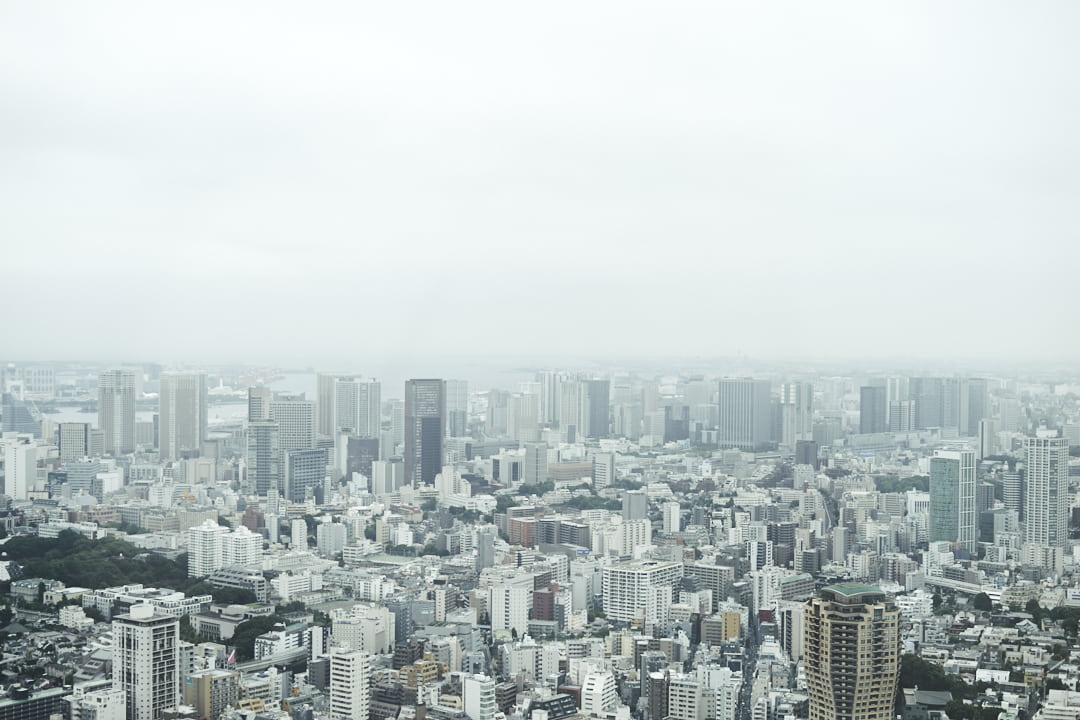
Where to Take the Best Photos of Japan: As Told by a Pro
Get unlimited access to the world's best travel stories. subscribe now., privacy overview.
Wine Tourism: Constructs of the Experience
- First Online: 18 January 2019
Cite this chapter

- Arlindo Madeira 4 ,
- Antónia Correia 5 &
- José António Filipe 6
Part of the book series: Tourism, Hospitality & Event Management ((THEM))
1426 Accesses
7 Citations
1 Altmetric
Wine tourism experiences include activities such as visits to wine routes and wine tastings and gastronomy in the producers and local restaurants, as well as ludic and cultural activities. This experience presupposes the interaction of tourists with their hosts and with the place as well as with the product (wine and food). This relation within hosts, guests and place have been applied and explored in a number of fields, however in terms of tourism the number of researches in this framework are scarce and it is even scarce in what refers to wine tourism. Theoretically supported by Pine and Gilmore ( 1998 ) definition of tourism experience, this research mostly based on literature review, depicts the recurrent phases of a wine tourism experience, underlining its constructs. The main focus of this chapter is the wine tourism experience that the guest faces when getting into contact with the elements comprising the wine tourism product. This study is supported in three dimensions of interaction that explain the experience: Guest, Host and Place. The guest relates with the place based on his/her perceived brand equity and brand image, the host providing a good service to the guest manifest in his/her satisfaction and loyalty, being those the most important determinants of wine experience. The concept and boundaries of the wine tourism experience need to be established in order to understand the guest’s experiential priorities.
This is a preview of subscription content, log in via an institution to check access.

Access this chapter
Subscribe and save.
- Get 10 units per month
- Download Article/Chapter or eBook
- 1 Unit = 1 Article or 1 Chapter
- Cancel anytime
- Available as PDF
- Read on any device
- Instant download
- Own it forever
- Available as EPUB and PDF
- Durable hardcover edition
- Dispatched in 3 to 5 business days
- Free shipping worldwide - see info
Tax calculation will be finalised at checkout
Purchases are for personal use only
Institutional subscriptions
Similar content being viewed by others

Wine Tourism in South Africa: Valued Attributes and Their Role as Memorable Enticements

Is Wine Tourism a Niche Tourism? Antecedents and Consequences of Wine as a Niche Tourism, a Conceptual Model

Factors Influencing Consumer Wine Choice: The Case of Wine Tourism
Aaker, D. (1996). Measuring brand equity across products and markets. California Management Review, 38 (3), 102–120.
Article Google Scholar
Alant, K., & Bruwer, J. (2004). Wine tourism behaviour in the context of a motivational framework for wine regions and cellar doors. Journal of Wine Research, 15 (1), 27–37.
Alebaki, M., & Iakovidou, O. (2011). Market segmentation in wine tourism: A comparison of approaches. Tourismos, An International Multidisciplinary Journal of Tourism, 6 (1), 123–140.
Google Scholar
Alebaki, M., Menexes, G., & Koutsouris, A. (2015). Developing a multidimensional framework for wine tourist behavior: Evidence from Greece. Wine Economics and Policy, 4 (2), 98–109.
Becker, C. (1984). Der Weintourismus an der Mosel. Berichte zur deutschen Landeskunde, 58 (2), 381–405.
Beverland, M. (1998). Wine tourism in New Zealand—Maybe the industry has got it right. International Journal of Wine Marketing, 10 (2), 24–33.
Bitner, M. (1992). Servicescapes: The impact of physical surroundings on customers and employees. The Journal of Marketing, 56 (2), 57–71.
Brown, G., Havitz, M., & Getz, D. (2006). Relationship between wine involvement and wine related travel. Journal of Travel & Tourism Marketing, 2 (1), 31–46.
Bruwer, J. (2003). South African wine routes: some perspectives on the wine tourism industry’s structural dimensions and wine tourism product. Tourism Management, 24 (4), 423–435.
Bruwer, J., & Alant, K. (2009). The hedonic nature of wine tourism consumption: An experiential view. International Journal of Wine Business Research, 21 (3), 235–257.
Bruwer, J., & Johnson, R. (2010). Place-based marketing and regional branding strategy perspectives in the California wine industry. Journal of Consumer Marketing , 27 (1), 5–16.
Bruwer, J., & Joy, A. (2017). Tourism destination image (TDI) perception of a Canadian regional winescape: A free-text macro approach. Tourism Recreation Research, 42 (3), 367–379.
Bruwer, J., Li, E., & Reid, M. (2002). Segmentation of the Australian wine market using a wine-related lifestyle approach. Journal of Wine Research, 13 (3), 217–242.
Bruwer, J., Prayag, G., & Disegna, M. (2018). Why wine tourists visit cellar doors: Segmenting motivation and destination image. International Journal of Tourism Research, 20 (3), 355–366.
Byrd, T., Canziani, B., Hsieh, J., Debbage, K., & Sonmez, S. (2016). Wine tourism: Motivating visitors through core and supplementary services. Tourism Management, 52, 19–29.
Cambourne, B., Macionis, N., Hall, M., & Sharples, L. (2000). The future of wine tourism. In C. M. Hall, L. Sharples, B. Cambourne, & N. Macionis (Eds.), Wine tourism around the world . Oxford: Butterworth-Heinemann.
Capitello, R., Begalli, D., & Agnoli, L. (2013). Tourism experiences and wine experiences: a new approach to the analysis of the visitor perceptions for a destination. The case of Verona. In 7th Academy of Wine Business Research International Conference .
Carlsen, J., & Charters, S. (2004). International wine tourism research. In Proceedings of the International Wine Tourism Conference . Cambridge: CAB International Publisher.
Carlsen, J., & Dowling, R. (1998). Wine tourism marketing issues in Australia. International Journal of Wine Marketing, 10 (3), 23–32.
Carlsen, J., & Dowling, R. (2001). Regional wine tourism: A plan of development for Western Australia. Tourism Recreation Research, 26 (2), 45–52.
Carmichael, B. (2005). Understanding the wine tourism experience for winery visitors in the Niagara Region, Ontario, Canada. Tourism Geographies, 7 (2), 185–204.
Charters, S., & Ali-Knight, J. (2000). Wine tourism—A thirst for knowledge? International Journal of Wine Marketing, 12 (3), 70–80.
Charters, S., & Ali-Knight, J. (2002). Who is the wine tourist? Tourism Management, 23 (3), 311–319.
Charters, S., Fountain, J., & Fish, N. (2009). “You felt like lingering…” Experiencing “real” service at the winery tasting room. Journal of Travel Research, 48 (1), 122–134.
Chen, X., Bruwer, J., Cohen, J., & Goodman, S. (2016). A wine tourist behaviour model for Australian winery cellar doors. Tourism Analysis, 21 (1), 77–91.
Cohen, E., & Ben-Nun, L. (2009). The important dimensions of wine tourism experience from potential visitors’ perception. Tourism and Hospitality Research, 9 (1), 20–31.
Corigliano, M. (1996). Caratteristiche della Domanda Strategie di Offerta e Aspetti Territoriali e Ambientali . Franco Angeli: Milano.
Dodd, T. (1995). Opportunities and pitfalls of tourism in a developing wine industry. International Journal of wine marketing, 7 (1), 5–16.
Dodd, T. (1999). Attracting repeat customers to wineries. International Journal of Wine Marketing, 11 (2), 18–28.
Dodd, T., & Beverland, M. (2001). Winery tourism life-cycle development: A proposed model. Tourism Recreation Research, 26 (2), 11–21.
Dodd, T., & Bigotte, V. (1997). Perceptual differences among visitor groups to wineries. Journal of Travel Research, 35 (3), 46–51.
Duarte Alonso, A., & Liu, Y. (2010). Wine tourism development in emerging Western Australian regions. International Journal of Contemporary Hospitality Management , 22 (2), 245–262.
Edwards, F. (1989). The marketing of wine from small wineries: Managing the intangibles. International Journal of Wine Marketing, 1 (1), 14–17.
Espejel, J., & Fandos, C. (2009). Wine marketing strategies in Spain: A structural equation approach to consumer response to protected designations of origin (PDOs). International Journal of Wine Business Research, 21 (3), 267–288.
Fountain, J., Fish, N., & Charters, S. (2008). Making a connection: Tasting rooms and brand loyalty. International Journal of Wine Business Research, 20 (1), 8–21.
Frochot, I. (2000). Wine tourism in France: A paradox?. Wine tourism around the world: Development, management and markets. In C. M. Hall, L. Sharples, B. Cambourne, & N. Macionis (Eds.), Wine tourism around the world . Oxford: Butterworth-Heinemann.
Frochot, I. (2003). An analysis of regional positioning and its associated food images in French tourism regional brochures. Journal of Travel & Tourism Marketing, 14 (3–4), 77–96.
Galloway, G., Mitchell, R., Getz, D., Crouch, G., & Ong, B. (2008). Sensation seeking and the prediction of attitudes and behaviours of wine tourists. Tourism Management, 29 (5), 950–966.
Gatti, S., & Maroni, F. (2004). A profile of wine tourists in some Italian region vineyards: An application of the multiple correspondence analysis. In Colloque Oenométrie XI , Dijon.
Getz, D. (2000). Explore wine tourism: Management, development & destinations . New York: Cognizant Communication Corporation.
Getz, D., & Brown, G. (2006). Critical success factors for wine tourism regions: A demand analysis. Tourism Management, 27 (1), 146–158.
Gilbert, D. (1992). Touristic development of a viticultural region of Spain. International Journal of Wine Marketing, 4 (2), 25–32.
Gillespie, C. (2002). European gastronomy into the 21st century. Food Service Technology, 2 (2), 107–107.
Gómez, M., Lopez, C., & Molina, A. (2015). A model of tourism destination brand equity: The case of wine tourism destinations in Spain. Tourism Management, 51, 210–222.
Grimstad, S., & Burgess, J. (2014). Environmental sustainability and competitive advantage in a wine tourism micro-cluster. Management Research Review, 37 (6), 553–573.
Hall, M. (1996). Wine tourism in New Zealand. In G. Kearsley (Ed.) Proceedings of tourism down under II: A tourism research conference , Dunedin: Centre for Tourism, University of Otago.
Hall, M., Johnson, G., Cambourne, B., Macionis, N., Mithcell, R., & Sharples, L. (2000). Wine tourism: An introduction. In C. M. Hall, L. Sharples, B. Cambourne, & N. Macionis (Eds.), Wine tourism around the world . Oxford: Butterworth-Heinemann.
Hall, M., Longo, A. M., Mitchell, R., & Johnson, G. (2002). Wine tourism in. Wine tourism around the world: development, management and markets , 150.
Chapter Google Scholar
Hall, M., & Mitchell, R. (2000). Wine tourism in the Mediterranean: A tool for restructuring and development. Thunderbird International Business Review, 42 (4), 445–465.
Hall, M., & Sharples, L. (2008). Food and wine festivals and events around the world: Development, management and markets . Oxford: Butterworth-Heinemann.
Book Google Scholar
Hashimoto, A., & Telfer, D. (2003). Positioning an emerging wine route in the Niagara region: Understanding the wine tourism market and its implications for marketing. Journal of Travel & Tourism Marketing, 14 (3–4), 61–76.
Johnson, G. (1998). Wine tourism in New Zealand—A national survey of wineries . Unpublished Dip. Tour. Dissertation. University of Otago.
Johnson, R., & Bruwer, J. (2007). Regional brand image and perceived wine quality: The consumer perspective. International Journal of Wine Business Research, 19 (4), 276–297.
Kivela, J., & Crotts, J. C. (2006). Tourism and gastronomy: Gastronomy’s influence on how tourists experience a destination. Journal of Hospitality & Tourism Research, 30 (3), 354–377.
Lee, T., & Chang, Y. (2012). The influence of experiential marketing and activity involvement on the loyalty intentions of wine tourists in Taiwan. Leisure Studies, 31 (1), 103–121.
Lockshin, L., & Spawton, T. (2001). Using involvement and brand equity to develop a wine tourism strategy. International Journal of Wine Marketing, 13 (1), 72–81.
Macionis, N. (1996). Wine tourism: Just what is it all about? Wine tourism in Australia. In G. Kearsley (Ed.) Proceedings of tourism down under II: A tourism research conference , Dunedin: Centre for Tourism, University of Otago.
Marlowe, B., Brown, E., & Zheng, T. (2016). Winery tasting-room employee training: Putting wine first in Oregon. Journal of Quality Assurance in Hospitality & Tourism, 17 (2), 89–100.
Marzo-Navarro, M., & Pedraja-Iglesias, M. (2012). Critical factors of wine tourism: Incentives and barriers from the potential tourist’s perspective. International Journal of Contemporary Hospitality Management, 24 (2), 312–334.
Mason, M., & Paggiaro, A. (2012). Investigating the role of festivalscape in culinary tourism: The case of food and wine events. Tourism Management, 33 (6), 1329–1336.
Mitchell, R., & Hall, C. (2001). Lifestyle behaviours of New Zealand winery visitors: Wine club activities, wine cellars and place of purchase. International Journal of Wine Marketing, 13 (3), 82–93.
Mitchell, R., & Hall, C. (2004). The post-visit consumer behaviour of New Zealand winery visitors. Journal of Wine Research, 15 (1), 39–49.
Mitchell, R., & Hall, C. (2006). Wine tourism research: The state of play. Tourism Review International, 9 (4), 307–332.
Mitchell, R., Hall, C., & McIntosh, A. (2000). Wine tourism and Wine tourism around the world: Development, management and markets. In C. M. Hall, L. Sharples, B. Cambourne, & N. Macionis (Eds), Wine tourism and consumer behaviour. Oxford: Butterworth-Heinemann.
O’Neill, M., & Charters, S. (2006). Managing tourism and hospitality services: Theory and international applications. In Prideaux, B., Moscardo, G, & Laws, E. (Eds), Service quality at the cellar door: A lesson in services marketing from Western Australia’s wine-tourism sector. Cambridge: CAB International Publisher.
O’Neill, M., & Palmer, A. (2004). Wine production and tourism: Adding service to a perfect partnership. Cornell Hotel and Restaurant Administration Quarterly, 45 (3), 269–284.
O’Neill, M., Palmer, A., & Charters, S. (2002). Wine production as a service experience—The effects of service quality on wine sales. Journal of Services Marketing, 16 (4), 342–362.
Orth, U. R., McGarry Wolf, M., & Dodd, T. H. (2005). Dimensions of wine region equity and their impact on consumer preferences. Journal of Product & Brand Management, 14 (2), 88–97.
Pikkemaat, B., Peters, M., Boksberger, P., & Secco, M. (2009). The staging of experiences in wine tourism. Journal of Hospitality Marketing & Management, 18 (2–3), 237–253.
Pine, J., & Gilmore, J. (1998). Welcome to the experience economy. Harvard Business Review, 76 (4), 97–105.
Pine, J., & Gilmore, J. (1999). The experience economy: Work is theatre & every business a stage . Boston: Harvard Business Press.
Poitras, L., & Donald, G. (2006). Sustainable wine tourism: The host community perspective. Journal of Sustainable Tourism, 14 (5), 425–448.
Quadri-Felitti, D., & Fiore, A. (2012). Experience economy constructs as a framework for understanding wine tourism. Journal of Vacation Marketing, 18 (1), 3–15.
Roberts, L., & Sparks, B. (2006). Enhancing the wine tourism experience: The customers’ viewpoint . In J. Carlsen & S. Charters (Eds.), Global wine tourism research management and marketing . Cambridge: CAB International Publisher.
Santich, B. (2004). The study of gastronomy and its relevance to hospitality education and training. International Journal of Hospitality Management, 23 (1), 15–24.
Sparks, B. (2007). Planning a wine tourism vacation? Factors that help to predict tourist behavioural intentions. Tourism Management, 28 (5), 1180–1192.
Spawton, T. (1986). Understanding wine purchasing: Knowing how the wine buyer behaves can increase sales. Australian Wine Industry Journal, 1 (3), 89–91.
Stewart, J., Bramble, L., & Ziraldo, D. (2008). Key challenges in wine and culinary tourism with practical recommendations. International Journal of Contemporary Hospitality Management, 20 (3), 303–312.
Telfer, D. (2001). Strategic alliances along the Niagara wine route. Tourism Management, 22 (1), 21–30.
Thach, E., & Olsen, J. (2003). Customer service training in winery tasting rooms: Perceptions of effectiveness by tasting room personnel’. In Third Australian Wine Marketing Conference , Adelaide.
Williams, P. (2001). Positioning wine tourism destinations: An image analysis. International Journal of Wine Marketing, 13 (3), 42–58.
Williams, P., & Dossa, K. (2003). Non-resident wine tourist markets: Implications for British Columbia’s emerging wine tourism industry. Journal of Travel & Tourism Marketing, 14 (3–4), 1–34.
Yuan, J., & Jang, S. (2008). The effects of quality and satisfaction on awareness and behavioral intentions: Exploring the role of a wine festival. Journal of Travel Research, 46 (3), 279–288.
Download references
Author information
Authors and affiliations.
Instituto Universitário de Lisboa, Universidade Europeia, Rua Laura Ayres, nº 4, 1600-510, Lisbon, Portugal
Arlindo Madeira
CEFAGE, Universidade do Algarve, Universidade Europeia, Rua Antonio Henrique Balte, lote 78, 8005-328, Faro, Portugal
Antónia Correia
Instituto Universitário de Lisboa, Av das Forças Armadas, 1649-026, Lisbon, Portugal
José António Filipe
You can also search for this author in PubMed Google Scholar
Corresponding author
Correspondence to Arlindo Madeira .
Editor information
Editors and affiliations.
Department of Economics, Technical University of Cartagena, Cartagena, Spain
Andrés Artal-Tur
School of Tourism, Dokuz Eylül University, İzmir, Turkey
Metin Kozak
Faculty of Tourism, Anadolu University, Eskişehir, Turkey
Nazmi Kozak
Rights and permissions
Reprints and permissions
Copyright information
© 2019 Springer Nature Switzerland AG
About this chapter
Madeira, A., Correia, A., Filipe, J.A. (2019). Wine Tourism: Constructs of the Experience. In: Artal-Tur, A., Kozak, M., Kozak, N. (eds) Trends in Tourist Behavior. Tourism, Hospitality & Event Management. Springer, Cham. https://doi.org/10.1007/978-3-030-11160-1_6
Download citation
DOI : https://doi.org/10.1007/978-3-030-11160-1_6
Published : 18 January 2019
Publisher Name : Springer, Cham
Print ISBN : 978-3-030-11159-5
Online ISBN : 978-3-030-11160-1
eBook Packages : Business and Management Business and Management (R0)
Share this chapter
Anyone you share the following link with will be able to read this content:
Sorry, a shareable link is not currently available for this article.
Provided by the Springer Nature SharedIt content-sharing initiative
- Publish with us
Policies and ethics
- Find a journal
- Track your research
Wine Tastings & Tours
There’s no place quite like Mumm Napa to savor exceptional sparkling wines and enjoy spectacular Napa Valley views.
All guests must be 21+. We are unable to accommodate anyone under the age of 21, including infants and children.
Hours: 10:00am – 5:30pm (Daily), last seating at 4:30 pm
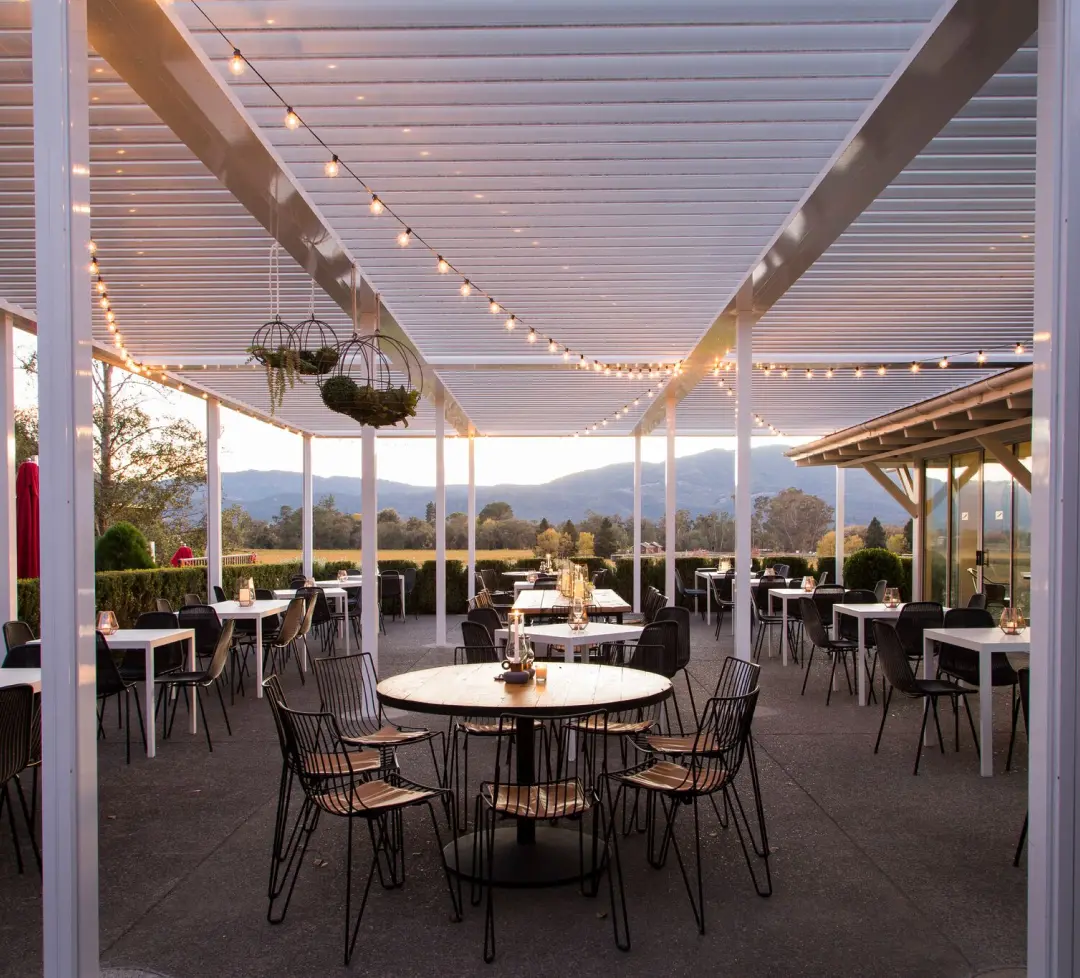
Outdoor Patio Experience
Taste a flight of sparkling wines on our beautiful outdoor patio while enjoying views of the surrounding vineyards and the Mayacamas Mountains.
Pricing: From $40/ person | Complimentary for Club Members
Club members enjoy up to four complimentary tastings per month
Please note that reservations are recommended & all guests in your party must be 21+.

Tasting Room Experience
Enjoy a flight of sparkling wines in the comfort of our climate-controlled tasting room while taking in the views of the surrounding vineyards and Mayacamas Mountains in this hour-long experience.
Pricing: From $40 / person | Complimentary for Club Members
Please note that reservations are recommended & all guests in your party must be 21+.
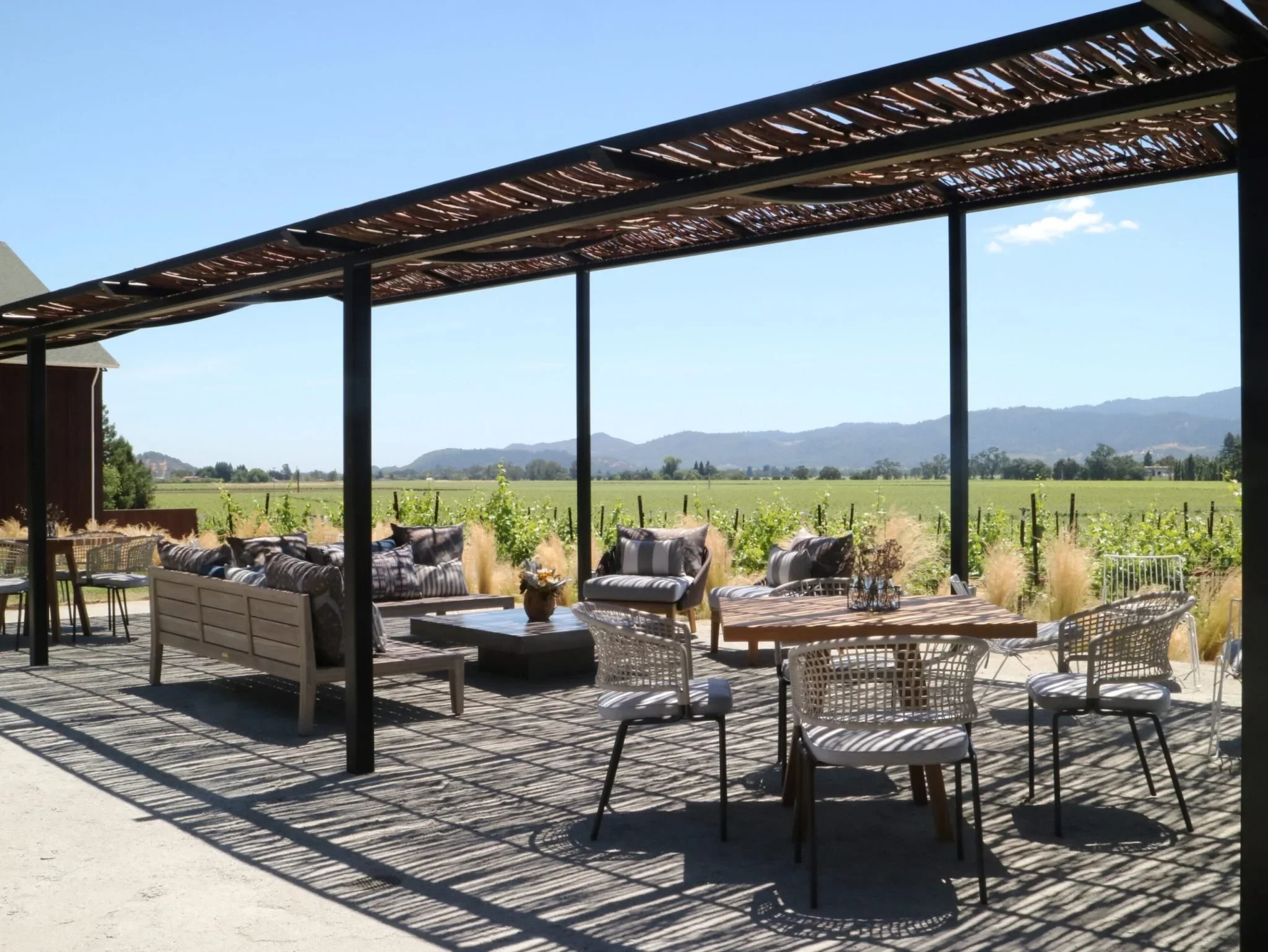
Vineyard Green Experience (Seasonal)
Taste a selection of sparkling wines in a unique, relaxed outdoor setting nestled among the vines. Available Friday through Sunday.
Pricing: $55 /person | Complimentary for Club Members
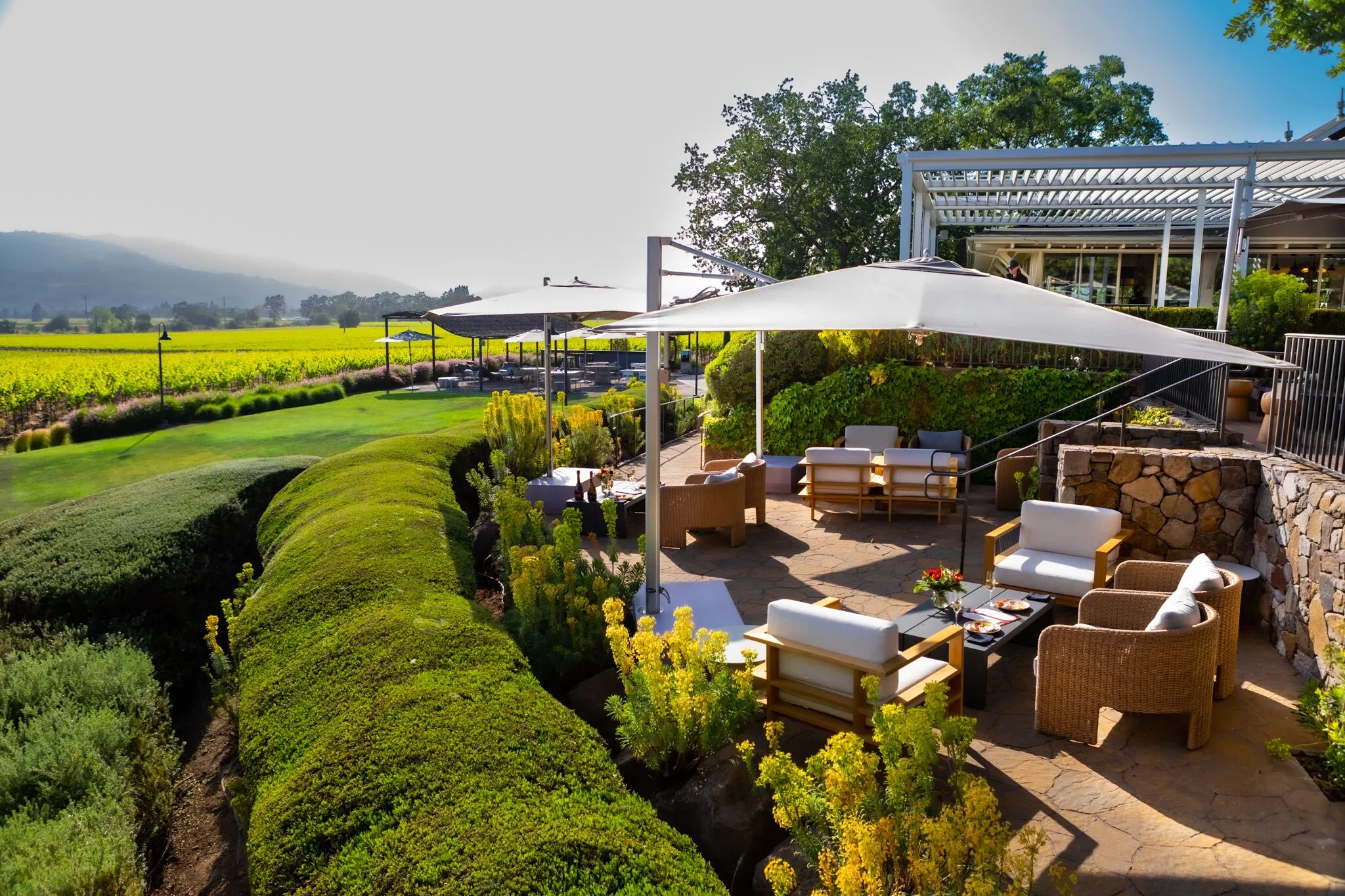
Sparkling Wine & Artisan Cheese
Oak Terrace Experience
Enjoy a leisurely tasting of limited-production reserve wines including DVX and seasonal cheeses in a special 75-minute experience.
Pricing: $85 /person | $68/ Club Member
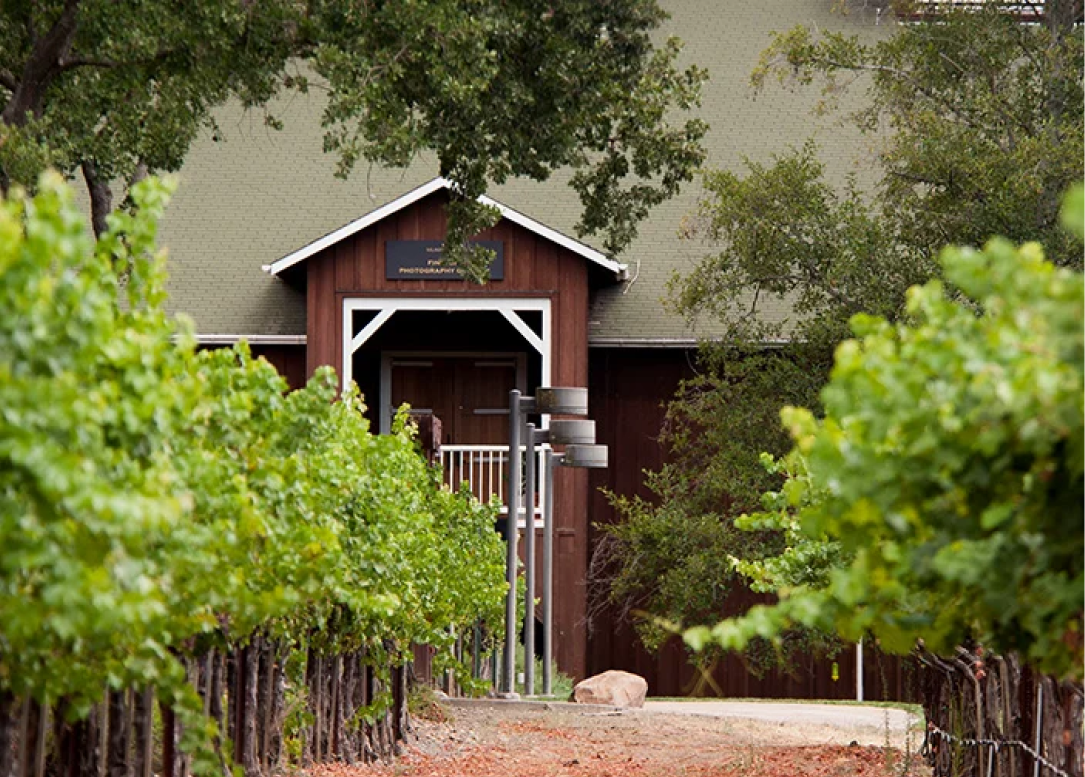
Private Tour & Tasting Experience
“Capturing the Sparkle”
See méthode traditionnelle sparkling winemaking behind the scenes on a relaxed tour of our historic property, followed by an Oak Terrace tasting.
Pricing: $125 /person | $100 /Club Member
120 minutes
Indoor / Outdoor
Please note that reservations are required & all guests in your party must be 21+.

Larger Groups or Events
For parties of 9 or more, please contact us at 800-686-6272. We’ll help you find the perfect experience for your group or event.
Please note that reservations are required & all guests in your party must be 21+.
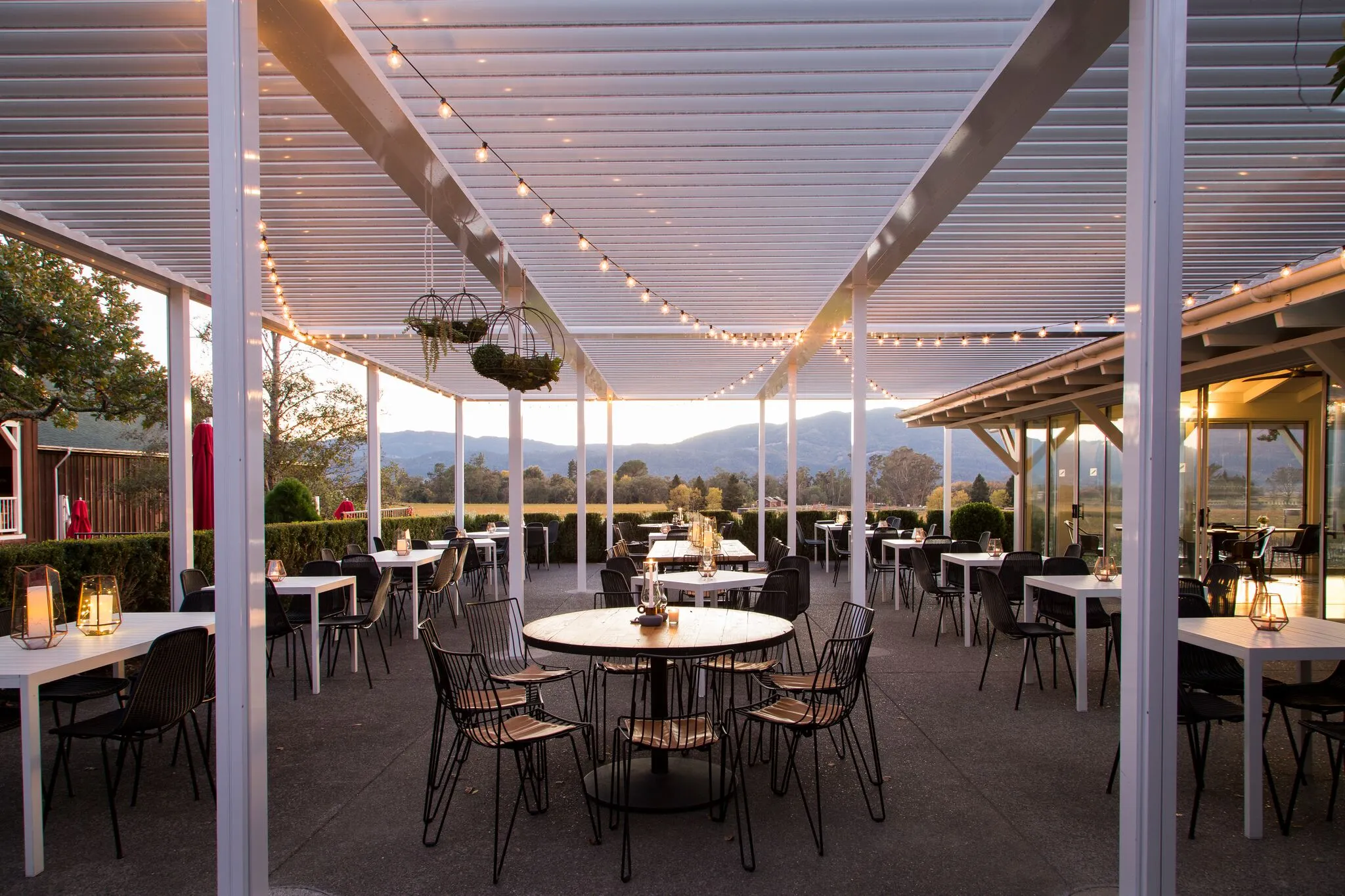
Visitor Center 8445 Silverado Trail Rutherford, CA 94573
Phone: 800-686-6272
How it works
Simply select your experience, book, and visit our winery to enjoy your tasting or tour.
Please note that reservations are required & all guests in your party must be 21+. We are unable to accommodate anyone under the age of 21, including infants and children. Please review our Visitor FAQ before your visit.
Questions? Please contact us at 800-686-6272 or [email protected] .
Choose Your Tasting or Tour
Select from our experiences. Whichever tasting or tour you choose, you’ll enjoy incredible sparkling wines and spectacular views of Napa Valley.
Book online or over the phone. If you’re booking online, simply select the number of guests, your desired date and time, and complete your reservation. To reserve over the phone, call 800-686-6272 .
Come to our visitor center, check in, and you’re all set to enjoy your tasting or tour! If you’re running late, give us a call and let us know. Parties running more than 15 minutes late may need to reschedule.
Wine Tastings & Tours FAQ
Do you require reservations for experiences.
Reservations are required for the Private Tour & Tasting Experience. For all other tasting experiences, reservations are recommended.
How do I make a reservation for an experience?
Reservations can easily be made online HERE or by calling 800-686-6272 , we are available daily 8:30-4:30 PST for personal assistance. Our hours of operation for tastings are 10am- 6pm, daily and the last reservation is at 5pm to allow for a 60-minute seated experience before closing. You will receive a confirmation of your reservation via email. If you are running late, we kindly ask that you call to let us know. We offer a 15-minute grace period after the reserved time we will need to reschedule your reservation.
How do I use my club member benefits when booking?
Your club member savings will automatically be applied to your reservation upon booking. Please ensure that you are logged in using the email address associated with your club membership.
Can I add people to my reservation upon arrival at the winery?
Please call ahead if you have any changes to your party size. While we cannot guarantee additional guests will be added to reservation, if we have an available table, we will be happy to accommodate changes if the number of total guests does not exceed six people.
What is your cancellation policy?
Your reservation can be cancelled at any time before the time of the reservation should your plans change. However, when possible, we request that you cancel your reservation at least 24 hours in advance. If you need to modify or cancel your reservation, please call 800-686-6272 , we are available daily 8:30-4:30 PST.
Questions? Please contact us at 800-686-6272 or [email protected] .
Find Us On Social Media
@MUMMSPARKLING

Join our email newsletter to receive the latest winery updates, limited releases, and exclusive offers.

Life’s Moments Deserve A Celebration
GENERAL & WINE ORDERS
[email protected] 800-686-6272
CLUB MUMM NAPA CONCIERGE
[email protected] 800-686-6272
Visit Us Wine Club About Blog Shop Contact
Account Login Store Locator Shipping FAQs Wine Club FAQs Visitor FAQs
Privacy Policy Interest-Based Ads Terms and Conditions Terms of Use (UGC) Responsibility.org
Please do not share with anyone under 21. Drink Responsibly. ©2024 Mumm Napa.
You have to be over 21 to enter this site
Please enter your date of birth
Please enter a valid value for the fields: {fields}
You must be of legal age to access the site
Don't tick this box if your computer can be accessed by people under legal drinking age
Our site is intended for adults of legal drinking age. Please enjoy our wines responsibly. Learn more about our policies: Privacy Policy , Terms & Drinking Responsibly .
- Twitter / X
- Readers' Choice
- Food & Drink
- Arts & Culture
- Travel Guides
USA TODAY 10Best
Why McMinnville, Oregon, is perfect for exploring Willamette Valley wineries

August 22, 2024 // By Amber Gibson
By Amber Gibson August 22, 2024
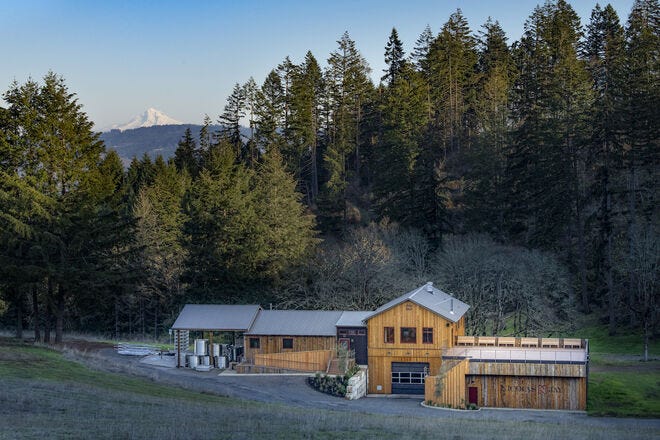
Wine lovers know Napa Valley and Sonoma, but Willamette Valley is one of the best regions for a wine country getaway . Centering it all is McMinnville, Oregon, the perfect home base for a fantastic Pacific Northwest food and wine adventure.
In 2021, the European Union granted Willamette Valley the coveted Protected Geographical Indication (PGI) status, indicating the wine's quality, reputation, and other characteristics are indisputably linked to its geographic origin. Willamette Valley is only the second American wine region, after Napa, to receive this recognition. Located on the same parallel as Burgundy, elegant pinot noirs and chardonnays are the specialty, along with some of the country's best champagne method sparkling wines.
With more than 700 wineries across the Willamette Valley to visit, you need a plan and a central location from which to explore the region's wineries and tasting rooms. McMinnville is known for its super walkable downtown, small-town charm, excellent restaurants, boutique hotels, and cute stores. (Don't miss Third Street Books , which has the most thoughtful curation of good reads, greeting cards, and unique gifts.)
Advertisement Advertisement
The best part is that you can reach McMinnville and the wine country with an hour's drive from Portland International Airport. Here are our picks for the best places to stay, eat, and drink in McMinnville.
Where to stay in McMinnville, Oregon

Several boutique hotels have popped up in McMinnville in recent years, including Tributary Hotel , Oregon's first Relais & Chateaux property. It has eight luxurious suites, each named after different Oregon rivers. Breakfast here is a veritable feast, delivered to your room each morning with panache. And the chocolate chip and cherry hazelnut sea salt cookies for turndown service are life-changing.
The Boutique Retreat is a more affordable option. The tiny-home hotel includes nine standalone cottages, each with a fun theme, ranging from an industrial-chic urban loft to a Hawaii-inspired surf shack. In the evenings, guests can gather around a communal fire pit with friends and family.

You can stay on a vineyard just 15 minutes from McMinnville at Durant at Red Ridge Farms . The estate's two-bedroom Stoneycrest Cottage is a true hidden gem overlooking the vineyards, with a full kitchen and laundry facilities. Waking up to the sun's golden glow and morning fog rolling across the vines is incredibly romantic. If you visit in November during the olive harvest, you can taste fresh-pressed olive oil from Oregon’s only commercial olive mill during Durant's Olio Nuovo Festival .
Abbey Road Farm is another bed and breakfast farm stay, featuring five silo suites with ambient floor heating and soaking tubs. Just a short stroll away, alpacas, miniature highland cows, chickens, and a trio of peacocks are your neighbors.
Wineries and vineyards near McMinnville, Oregon

Environmental stewardship has always been a core tenet of Oregon's wine industry, including biodynamic pioneer Montinore Estate , which has a tasting room in downtown McMinnville. However, it's worth venturing to the wineries and vineyards outside town for a more immersive experience, like the vineyard tours at Soter Vineyards' 240-acre biodynamic estate and farm or nature hikes at Van Duzer Vineyards . Both have panoramic hilltop views when you sit for an al fresco tasting. Van Duzer is LIVE (Low Input Viticulture and Enology) certified, a sustainable winemaking certification in Oregon.
From Artist Block , an irreverent tasting room that doubles as an art gallery for emerging artists, to Nicolas-Jay's French breakfast wine tasting, there are diverse wine-tasting experiences for every palate. Many wineries also have full-time chefs who craft delicious pairings to accompany wine tastings.

For example, at Antica Terra's biodynamic estate, guests can book lunch with wine pairings in the barrel room or enjoy a wine flight and picnic under the dappled sunlight of native oak trees at the 200-foot-long Table in the Trees. If you're ready to splurge, the Rarities tasting is the most extraordinary wine tasting in the country. It features a unicorn lineup of global wines alongside Antica Terra's estate chardonnays and pinot noirs, paired with chef Timothy Wastell's hyper-seasonal crudités, pâtés, house-made bread, and hors d'oeuvres.
If you prefer bubbles, Corollary Wines makes exclusively champagne-method sparkling wine; sip them at its tasting room in the Eola-Amity Hills surrounded by its estate vines. These are easily some of the best sparkling wines from the Willamette Valley, and the magnums are great for aging. Plus, you can't forget Argyle , the sparkling wine pioneer in the Willamette Valley, where tours include dosage trials and a hand-disgorging demonstration to teach guests more about the intricacies of sparkling winemaking.
Where to dine in McMinnville, Oregon
Grapes thrive in the lush landscape of the Willamette Valley, but there are also a plethora of farms and food artisans surrounding McMinnville. The valley is just an hour from the coast, so there's plenty of fresh local seafood on menus here, too.
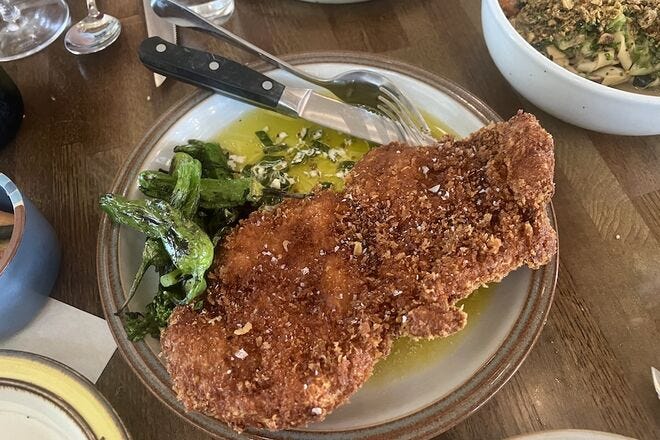
Hayward , McMinnville's first-ever James Beard finalist for best new restaurant, offers hearty portions of soulful food for sharing. Every dish has a delicious and unexpected twist, whether the white pepper hazelnut crunch on hand-cut pasta or nuoc cham aioli dressing on ultra-crispy pork katsu. Opt for the “kickback” family-style tasting menu, and you'll try nearly everything.

Ōkta is one of the best fine-dining restaurants in the country. Its captivating tasting menu and warm service reflect the microclimate of the Willamette Valley. Most of the produce comes from the restaurant's regenerative farm, home to a rustic food lab where global fermentation and fresh ingredients meet. Chef Matt Lightner imparts bright, bold accents and layers of nuanced flavor to delicately plated dishes that resemble works of art.
For elevated casual dining with excellent service, try Capo , which specializes in Neopolitan-style, wood-fired pizza. Start with the heirloom and sweet corn contorni, made with Even Pull Farm heirloom tomatoes, whipped ricotta, roasted Bernard’s Farm corn, pickled red onion, basil, parsley, basil oil, and crispy speck. The simple mixed green salad is livened up with mint, parsley, and a tangy roasted tomato vinaigrette. You can't go wrong with any of the pizzas, but the mushroom pizza is off-the-charts delicious, topped with caramelized red onion purée, fontina, cremini and oyster mushrooms, and fried sage.

About Amber Gibson
Amber Gibson is a sparkling wine aficionado, and Willamette Valley is her favorite American wine region.
Read more about Amber Gibson here.
Connect with Amber via: Website | Facebook | Instagram | Twitter
Ultimate Port Wine Tasting Tour in Porto
Sip your way through 10 exceptional tastings at three of gaia’s finest establishments.
Porto and port wine may share a name, but did you know the best place to savor this famed drink is across the Douro River in Vila Nova de Gaia? We’ve teamed up with an expert guide and booked tables at three of the city’s top wine companies, so you can sip the finest port wines in existence, exactly where and how they’re meant to be enjoyed. With 10 tastings, immersive cellar tours, and plenty of time to chat with your group and guide, you’ll undoubtedly bid farewell grinning from ear to ear.

- Meet your guide at the riverfront near Posto de Turismo
- Vila Nova de Gaia
- First winery
- The Best Porto Wines
- Second Winery
- Wine Cellar
- Third Winery
- End your tour after your last winery visit
Your extraordinary three-hour tasting tour begins at the ever-so-charming Burmester Wine Cellar, where you’ll meet your guide, tour the stylish facility, and savor your first sips of exceptional port wine. Next, journey to a celebrated family-owned wine company that's been perfecting their craft for over 250 years, and indulge in four more tastings while your guide shares the fascinating history of port in the Douro region
Lastly, continue to one of the largest exporters of Douro Valley wines and see for yourself the sophistication and pride that’s gone into every one of their 10 million bottles sold. With an expert guide leading the way, you’ll undoubtedly leave with a profound appreciation for the deep traditions of Vila Nova de Gaia, and perhaps a bottle or two of port to bring home!
Ultimate Port Wine Tasting Tour in Porto Description
Your 3-hour tour includes:
Guided walking tour with a professional tour guide
Visit three excellent wine brands
10 port wine tastings
Insightful history of port wine and Douro Valley
Exploration of Vila Nova de Gaia's historic wine cellars
Meet Your Guide in Vila Nova de Gaia
Ready for an unforgettable afternoon of wine tasting? Your adventure kicks off at a historic wine cellar in Vila Nova de Gaia. This charming city, tucked across the Douro River from Porto, is home to numerous cellars that have long stored and aged port wine to the highest standards. Awaiting your arrival is a friendly guide, ready to share their favorite spots and spill the secrets of Portugal’s legendary beverage.
After a brief overview of the day’s plans, step into the first wine cellar of the day where you’ll learn the philosophy behind making port-wine. As you tour the facilities, you'll gain insights into the production process and savor three ports from their outstanding collection.
Iconic Family-Owned Wine Company
Already enchanted by Gaia’s idyllic atmosphere and buzzing from the tasty port you’ve sampled, it’s time to continue to another legendary winery. We're keeping the name under wraps for now, as some surprises are best savored in the moment, but we can tell you this iconic family-owned company has been crafting port for 258 years. And if that’s not impressive enough, their exceptional wine is sure to do the trick.
Here, you'll taste four exceptional Port wines. Perhaps you’ll start with Ruby Port, packed with fresh berry flavors and a touch of spice. Then, experience the elegance of a Tawny Port, offering deep flavors of caramel, nuts, and dried fruits. Follow this with a refined Colheita before concluding with a prestigious Vintage Port. The exact selection may vary, but each tasting is guaranteed to delight.
The Ultimate Port Experience
Now, get ready for the grand finale of your wine adventure. Your guide will lead you to one of Douro Valley's largest and most renowned exporters, famed for their impressive production scale and state-of-the-art facilities. This powerhouse producer has sold over 10 million bottles in more than 50 countries, showcasing their unparalleled reach and expertise. Here, you’ll be treated to tastings of three exquisite Port wines, with each sip revealing the rich history and craftsmanship that define the offerings of this legendary producer.
When you’ve finished the tastings and had a chance to ask your knowledgeable guide any lingering questions, it’s time to bid farewell. There’s no need to hurry off, though. Head to the cellar door to purchase a bottle or hang around to enjoy another glass with your newfound friends. Here’s to an afternoon well spent!
The stops and the number of drinks at each stop may vary
" data-expanded-text="hide full description "> show full description
What you get with this tour

See what people are saying
0 total reviews
Frequently Asked Questions
What to bring?
Please bring a valid ID. We recommend wearing comfortable shoes, as you will be on your feet for parts of the tour. Additionally, bring a good camera, seasonally appropriate clothing, and a water bottle.
Is this tour run by The Tour Guy?
This tour is operated by one of our trusted and vetted partners in Porto.
What if I have concerns about my mobility on this tour?
If you have any doubts about your mobility, please let us know beforehand. The tour includes walking through facilities which may not be wheelchair accessible.
What happens if it rains?
We run our Port Wine Tasting Tour in Porto rain or shine. If the weather is extremely bad and we cannot proceed with the tour, we'll let you know as soon as possible.
Is there any chance my tour might be canceled?
On the rare occasions the tour is canceled, we'll inform you as soon as possible
Is it possible The Tour Guy will change the time of this wine tasting tour?
On the rare occassions that this tour time changes we'll inform you as soon as possible
Is there a dress code to join this Port Wine Tasting tour in Porto?
While there is no specific dress code, we recommend wearing comfortable, casual, and respectful clothing
Is lunch or dinner included in the price of the tour?
Lunch or dinner is not included in the price of this tour. We recommend having lunch before joining, as there are limited food options available during the tour.
Are drinks included in the price of the tour?
Yes, this tour includes 10 tastings of port wine. If you would like additional drinks, they can be purchased separately.
How many drinks will I get?
10 different varieties of Port wine are included in this tour, though the number of wines you’ll receive at each stop may vary.
Can I bring my kids, and do I have to pay for them?
This tour is designed for guests aged 18 and older, as it is the legal drinking age in Portugal. If you wish to bring someone under 18, please get in touch with us.
Why do I have to pay for my child who's under 6 years old?
Our Port Wine Tasting Tour in Porto has a set rate for all guests, regardless of age. This is because we limit the number of guests per departure to guarantee a personalized experience.
Does this tour include hotel pickup?
Hotel pickup is not an option for this tour. Please meet your guide at Avenida de Diogo Leite 135, Vila Nova de Gaia. This is outside Posto de Turismo, on the main sidewalk along the riverfront.
What should I bring?
Free 24-hr cancellation on group tours! Learn more
You may also like

Braga and Guimarães Day Trip from Porto
Explore Portugal’s Minho region, see the country’s oldest cathedral, and visit a medieval castle!
From: $92.80

Lisbon Day Trip to Óbidos, Nazaré and Porto
Wander through a medieval village, visit a charming fishing town, and admire the iconic Duoro River!
From: $115.99

The ultimate Douro Valley Wine Tasting and River Cruise from Porto
Sample exquisite wines at two acclaimed wineries, enjoy a traditional lunch, and hop on a cruise!
From: $114.84

Local Food Tour of Porto
Eat your way through this stunning Portuguese city while sampling local authentic dishes!
From: $98.60
Top tours customers bought with this tour:

Thank you for letting us know how your experience was!
Tell us about your experience.
If you need to book more than 7 guests on this tour, contact us at [email protected] A travel Expert will get back to you to arrange all the details.
Europe is re-opening for visitors!
Want to see which small group tours are now operating ?
More tours added weekly!
See Open Tours

- Travel Blog
- In The Press
- Help Center
- Top Attractions
Policy & Terms
- Cancellation Policy
- Terms & Conditions
- Privacy Policy
- USA or Canada: +1 888 290 5595
- Email: [email protected]

© 2024 - The Tour Guy All rights reserved.
- Destinations
- Winery Directory
35 Best Napa Wineries & Wine Tasting Tours for 2024
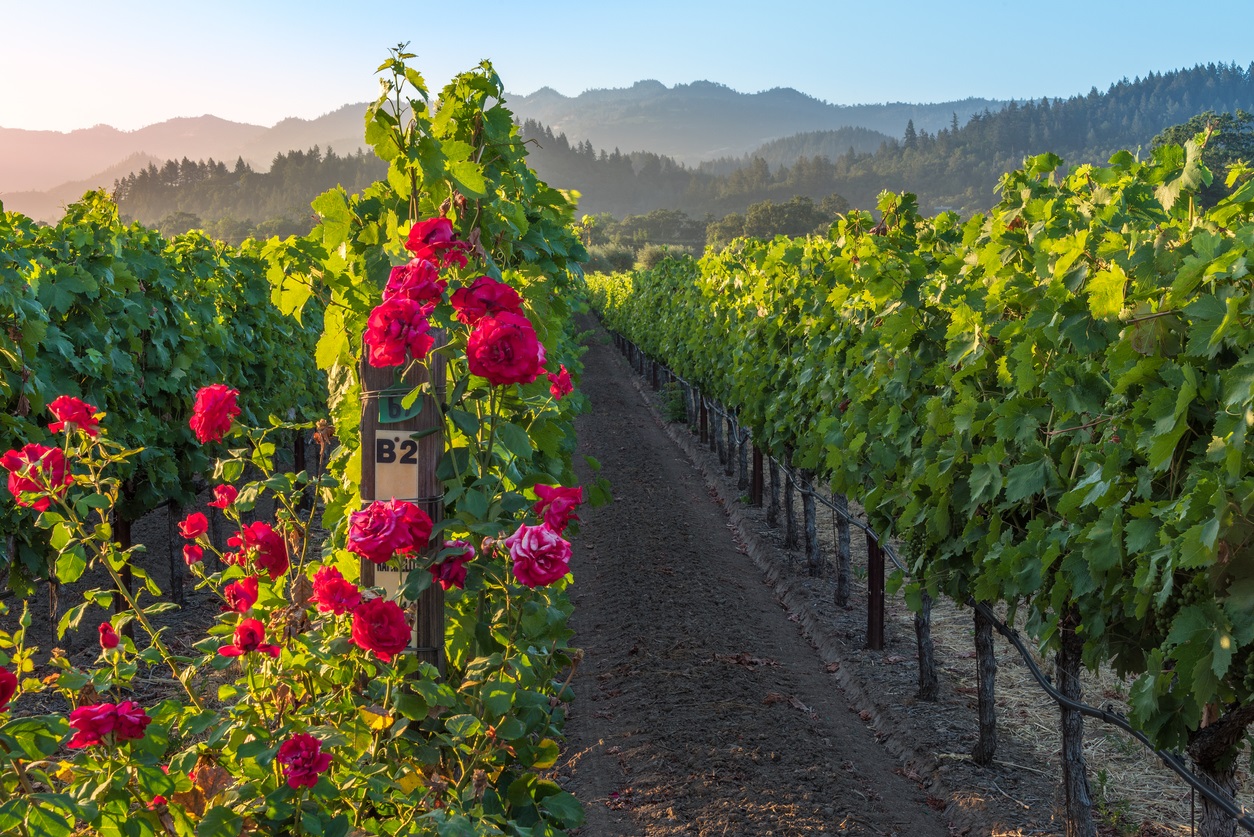
These are Some of the Best Napa Valley Wineries and Wine Tours, Along with Recommended Restaurants & Vineyard Hotels for Unique Tasting Experiences in 2024.
Napa Valley is the most important wine region in the United States. It was the first American wine region to be fully internationally recognized for producing high-quality wines. And, the Valley has risen to the challenge with world-famous places to eat, drink, and stay.
In this Napa wine tasting guide, we explore wineries, tours, restaurants, and hotels in Napa to craft the ultimate wine country experience for Winetravelers.
Best Napa Wineries & Things to Do This Year
Napa wineries along st. helena highway.
St. Helena Highway runs north and south through most of the towns that dot Napa Valley. In fact, visitors can get a great overview of Napa Valley’s various AVAs just by driving along it! The following wineries can be found on or just off of St Helena Highway (aka Route 29/128), from south to north.
Domaine Chandon
1 California Drive, Yountville
(888) 242 6366
Why Guests Love It: Sparkling Wine, VIP Service, Food & Bubbly Pairings
Every wine tasting tour should start with bubbly, and Domaine Chandon is here to heed the call! Located just off St Helena Highway, the serene grounds provide the perfect backdrop to sip some sparkling and soak in the good life. Cheers!
Nickel & Nickel
8164 St Helena Hwy, Oakville
(707) 967-9600
Why Guests Love It: Single Vineyard Cabernets, Library Wines, Exceptional Service
Since Napa Cabs are really what put California on the global winemaking map, be sure to stop off at Nickel & Nickel . With a range of single vineyard Cabernets to try, it’s a fascinating trip through Napa terroir, all with premier white glove service. Try some older vintages if they’re available to see how beautifully Napa Cab can age.
RELATED: Learn More about Napa’s History, Terroir and Grape Varieties
Sequoia Grove
8338 St Helena Hwy, Rutherford
(707) 944-2945
Why Guests Love It: Classic Cabernets, Boutique Feel, Food & Wine Pairings
Sequoia Grove is almost the little engine that could in Napa, not because it’s any less mighty but because it’s lowkey and relaxed. It’s definitely worth stopping in, though, because the wood-timber building surrounded by sequoias and cypresses gives a distinctive Northern Californian feel. Everything produced is fantastic but take note of the quintessential cedar notes in their Cabs. They’re a standout.
Grgich Hills
1829 St Helena Hwy, Rutherford
(707) 963-2784
Why Guests Love It: Historical Winery, Picnic Tastings, Eco-Focused
Named after its founders, Mike Grgich and Austin Hills, Grgich Hills is one of the more legendary wineries in Napa. Founded in 1977, it has consistently produced stellar wines to be tasted in an equally stellar stone building. Bonus: As of 2006, it uses only estate-grown fruit from its organic, biodynamic, and solar powered winery.
Corison Winery
987 St Helena Hwy, St Helena
(707) 963-0826
Why Guests Love It: Critically Acclaimed Wines, Female Winemaker, Vineyard Views
True trailblazers seem in short supply these days but thankfully Cathy Corison is still here. Year in and year out, she crafts award-winning Cabs from specific vineyard designations. She also produces a stunning Gewürztraminer and Riesling, both of which sing when paired with food. Be sure to snap up what you can because her wines consistently sell out.
401 St Helena Hwy South, St Helena
(707) 967-2626
Why Guests Love It: Stunning Artwork, Female Winemaker, Exceptional Wines
If the whimsical rabbit sculpture isn’t enough to make you stop, the wines most certainly will! Kathryn Hall comes by her craft genetical, having worked in her family’s vineyards north in Mendocino before striking out on her own. And although the Cabs are fabulous, cross the varietal line and taste their Merlots. You’ll be wowed.
The Salon at Heitz Cellar
436 St Helena Hwy, St Helena
(707) 963-2047
Why Guests Love It: Historical Winery, Cheese & Charcuterie Boards, Age-Worthy Wines
Heitz has been around since 1961 – yes, you read that correctly. Everything about Heitz speaks to tradition, from the vineyard selections to the woodblock-esque labels. It’s worth stocking up here and laying some down to age because Heitz is known to develop beautifully for years.
Freemark Abbey
3022 St Helena Hwy N, St Helena
(800) 963-9698
Why Guests Love It: Historical Winery, Stunning Architecture, Library Wines
Housed in a historic stone building that dates back to 1899, Freemark Abbey has consistently been a winery for over a century (except that during that little hiccup known as Prohibition). It further cemented its name in oenological history by being one of only twelve wineries invited to compete in the 1976 Judgement of Paris. Today, the wines remain standouts and tasting here brings guests on a trip through Napa history.
Sterling Vineyards
1111 W Dunaweal Lane, Calistoga
(800) 726-6136
Why Guests Love It: Breathtaking Views, Tram Rides, Award Winning Wines
Sterling Vineyards unfortunately sustained significant damage during the Glass Fire of 2020 and has since been undergoing reconstruction. The good news for everyone is that it is due to reopen in the Spring of 2023! Sterling has been a longtime favorite because of the stunning views. Plan ahead to book a tour that includes a tram ride to the top of the vista point and sip through their lineup. It’s worth the wait.
Tank Garage Winery
1020 Foothill Blvd, Calistoga
(707) 942-8265
Why Guests Love It: Art Deco Architecture, Intriguing Wines, Small Production
Of all wine tasting experiences through Napa, Tank Garage is probably the most unique because it’s located in a 1930s Art Deco gas station! Tank isn’t for the faint-of-heart – the people there are known for sprinkling salty language around, but they sure provide a fun experience. The wines are just as interesting with everything from orange pét-nat to carbonic Grenache.
Larkmead Vineyards
1100 Larkmead Lane, Calistoga
(707) 942-0167
Why Guests Love It: Outdoor Patio, Warm Customer Service, Bordeaux-style Wines
Situated in the heart of the Napa Valley on Larkmead Lane, between St. Helena and Calistoga, Larkmead Vineyards is framed by the breathtaking Mayacamas and Vaca mountain ranges. This picturesque setting provides an idyllic backdrop for #Winetravelers. Upholding a tradition of warm hospitality, Larkmead offers visitors exclusive guided tours of the estate, followed by a seated tasting experience in a private setting with expansive views of the vineyards. The selection of wines featured in each tasting varies throughout the year. Tasting experiences are available by appointment only, daily from 10:00 a.m. to 6:00 p.m. To reserve your visit, please email [email protected].
Top Napa Wineries along the Silverado Trail
Silverado Trail runs somewhat parallel to St Helena Highway on the east side of Napa. The two are close enough together to make it very easy to toggle between, but Silverado is decidedly quieter because village centers are found on St Helena Highway.
Baldacci Family Vineyards
6236 Silverado Trail, Napa
(707) 944-9261
Why Guests Love It: Wine Cave, Outdoor Terrace, Exceptional Reds
Located in Napa Valley’s prestigious Stags Leap District, Baldacci Family Vineyards is a family-owned estate renowned for its exceptional wines. Under the meticulous care of winemaker Michael Baldacci, the vineyard produces a limited portfolio of elegant, classically styled Cabernet Sauvignons that are delightful when young yet possess the complexity to age gracefully. These exquisite wines come from some of Napa Valley’s most celebrated vineyards, including estate-owned plots in Stags Leap District, Calistoga, and Diamond Mountain District. The portfolio also features a variety of red blends, sparkling wines, Chardonnay, Pinot Noir, and a late harvest Gewürztraminer.
The Estate House in Stags Leap District offers an intimate and educational wine tasting experience, set in a luxurious and welcoming environment. Baldacci Family Vineyards provides a perfect blend of sophistication and hospitality, making it a must-visit destination for any wine enthusiast.
Chateau Montelena
1429 Tubbs Lane, Calistoga
(707) 942-5105
Why Guests Love It: Stunning Architecture, Napa History, VIP Service
Chateau Montelena is the perfect start to a day of winetasting. This gorgeous stone chateau is home to some legendary wines, including the Chardonnay that beat out white Burgundies in the 1976 Judgement of Paris. Taste through their elegant line up of Cabs or go rogue and try their Riesling – everything is stunning.
Clos Pegase Winery
1060 Dunaweal Ln, Calistoga
(707) 942-4981
Why Guests Love It: Sleek Architecture, Quirky Sculptures, Cave Tours
Clos Pegase breaks rank with modern architecture and the quirky “friendship bench” but the wines are no less delightful. With a range of flight options, guests are encouraged to taste through all that Napa has to offer in a relaxing, elegant environment. Be sure to try all of the reds.
Honig Vineyard & Winery
850 Rutherford Rd, Rutherford
(707) 963-4272
Why Guests Love It: Eco Tours, Sustainable Winery, Fabulous Whites
Honig means ‘honey’ in German, which is denoted with the whimsical bees on Honig labels. And, Honig is true to its love of bees by being certified sustainable and solar powered. Book the Eco tour to learn all about Honig’s green practices before tasting through some beautiful wines, including their Sauvignon Blanc.
8445 Silverado Trail, Rutherford
(800) 686-6272
Why Guests Love It: Beautiful Views, Classic Sparkling Wine, Cheese Pairings
Is it bubbly time yet? Mumm Napa provides the best of French winemaking and Napa views. Guests can choose to taste through the delightful sparkling wines in a variety of settings, from patio seating to terrace tasting with cheese pairings.
8383 Silverado Trail, Napa
(707) 963-5188
Why Guests Love It: Beautiful Views, Organic Farming, Warm Hospitality
Although technically in another town, ZD is just down the road from Mumm and is definitely worth the stop. While ZD may be smaller than some of the huge Napa wineries, it is no less impressive and produces rich, luscious wines that manage to maintain perfect balance. Taste through the lineup, or book a tour with sample of library wines.
Quixote Winery
6126 Siverado Trail, Napa
(707) 944-2659
Why Guests Love It: Quirky Atmosphere, Estate Tours, Food & Wine Pairings
And now for something completely different! To experience Quixote Winery is to experience a quirky, carnivalesque atmosphere while tasting through intriguing, small production wines. All fruit sourced from Stags Lead District, their wines sell out quickly so be sure to stock up while you can.
Stags’ Leap Winery
6150 Silverado Trail, Napa
(707) 257-5790
Why Guests Love It: Historic Winery, Beautiful Views, Exceptional Service
Stags’ Leap is another legendary Napa winery and is a must for those wanting to taste through the best the valley has to offer. Indulge in a porch tasting to experience the stunning views alongside the stunning wines. And, be sure to grab a bottle of Petite Sirah, which is a perennial favorite among critics.
Clos du Val Winery
5330 Silverado Trail, Napa
(707) 261-5212
Why Guests Love It: Stunning Views, Creative Events, High End Hospitality
Clos du Val is nestled back among the vines, providing a picturesque experience for visitors. Book a tasting in advance, or check out events like Apéro nights, or sparkling wine brunches. No matter what you try, you’ll love the attention to detail that weaves through both the wines and the estate.
4240 Silverado Trail, Napa
(707) 257-2345
Why Guests Love It: Stunning Architecture, Luxurious Pairings, Exceptional Service
Darioush is sort of like Madonna or Cher in that it needs no other name: Darioush is enough. And, for those that know it, the name Darioush means opulence and grandeur unlike anything else in Napa. Grounded in Persian culture, hospitality is elevated to an art form here. Be sure to reserve the Signature Mezza tasting to try the wines alongside traditional Persian mezze plates.
Judd’s Hill Winery & MicroCrush
2332 Silverado Trail, Napa
(707) 255-2332
Why Guests Love It: Small Production, Family Owned, Relaxed Environment
Judd’s Hill is an anomaly in Napa because it’s lowkey and very hands on. Still family owned, guests are encouraged to book tastings, pairings, or even play winemaker and blend their own wines! Another charming experience is their annual poetry contest, for which winners receive a 3-liter bottle but the real prize is being part of this 20+ year tradition.
Best Napa Wine Tours
While we’re thrilled to share our favorite wineries throughout Napa, we’re also big believers in letting the local pros do the heavy lifting. Here are some of the best guided and private tours that take the guesswork out of navigating Napa.
Platypus Tours Limited offers the perfect way to have a more intimate experience while tasting fabulous wines and not worry about driving. (Designated drivers are the heroes we need!) This half-day wine tasting tour takes you to three exceptional wineries and also includes a complimentary picnic lunch . Hotel pickup/dropoff are also included.
It doesn’t get much better when you’re able to blend the great outdoors with an awesome authentic wine tasting experience. Napa Native Wine Tours offers a full-day guided tour, beginning the day with a morning hike through some of Napa’s redwood forests and mountainscapes. In the afternoon, this particular experience focuses on boutique wineries , so you’ll avoid the crowds and some of the more corporate setups. Hotel pickup and dropoff is also offered, with the option to include lunch.
Step back in time and try the Napa Valley Open Air Wine Trolley ! This throwback trolley lets you soak up the vibe throughout the experience, with a stop-off for lunch.
One of the more iconic experiences any Napa visitor should try (especially if it’s your first time), is to see the Valley from the air. Napa Valley Balloons offers a wine country hot air balloon ride , a breathtaking way to experience Napa. The company also flies drones in tandem to capture images of the experience that you can take home with you.
Restaurants
Oxbow public market.
610 1 st St, Napa
(707) 226-6529
Oxbow is a great place to start the day and plan your attack. There are countless dining options, or you can stock up on nibbles to take with you. It’s almost like a mini Napa boiled down to offer everything you could possibly need for a luxurious day of wine tasting.
Bouchon Bistro
6534 Washington St, Yountville
(707) 944-8037
Located just down the street from The French Laundry, Bouchon Bistro offers Thomas Keller’s vision in a lower-key setting. Think traditional bistro fare with the freshest ingredients, like moules au safran and steak frites. And, the stunning wine list is worth taking time to browse because it’s got some gems available by the glass.
Gott’s Roadside
933 Main St, St Helena
(707) 963-3486
If you were to ask Siri to show you the most California dining option possible, she’d definitely pull up Gott’s Roadside . These unpretentious roadside joint offers classics like double cheeseburgers alongside kale salads and baja fish tacos. And, because it’s in wine country, its beverage offerings include everything from kombucha to high end Cabs.
Goose & Gander
1245 Spring St, St Helena
(707) 967-8779
We love everything about Goose & Gander , from the adorable craftsman house that it occupies to the British-pub-meets-California menu that changes seasonally. The vegetarian options, like watermelon salad or fried squash blossoms, mean that vegetarians won’t be left in the cold.
6525 Washington St, Yountville
(707) 945-1050
Spacious and rustic, Bottega offers delectable Italian in the heart of Yountville’s Gourmet Gulch. Classic dishes are paired with wine selections that are updated daily. Save room for dessert because they are to die for.
Gatehouse Restaurant
The Culinary Institute of America at Greystone
2555 Main St, St Helena
(707) 967-2300
Support fine dining of the future by booking a fantastic evening at The Gatehouse , where students of the CIA (not that CIA) hone their culinary skills. Choose three or four course menus, with or without sommelier-selected pairings – just be sure to make class is in session before you go.
Meritage Resort and Spa
875 Bordeax Way, Napa
The Meritage Resort and Spa is the ultimate place to really indulge in the decadence of Napa. Even the basic rooms are perfection, while the suites take it to the next level. Amenities include everything from wine tastings to cooking class to wellness activities. And, bring your best friend: there’s an on-site dog park.
El Bonita Motel
195 Main St, St Helena
El Bonita hearkens back to the heyday of roadside motels in Americana. Basic accommodations in prime location make it the simple choice for an overnight after wine tasting. Book a poolside room for best access to the pool and hot tub.
SENZA Hotel
4066 Howard Lane, Napa
SENZA is off-the-beaten path just enough to provide guests with peace and quiet without being too far from everything. Each room has vineyard and/or garden views and amenities include a pool, a hot tub, and cabanas. There are also spa services available, like massages and facials.
Wine Country Inn & Cottages
1152 Lodi Ln, St Helena
This locally-owned establishment offers rooms and cottages in vineyard tranquility. Guests can take a dip in the heated swimming pool before warming themselves next to cottage fireplaces. The concierge is more than happy to recommend the best of Napa, from wineries to restaurants and more. Take a look at their current room rates .
Dr. Wilkinson’s Backyard Resort & Mineral Springs
1507 Lincoln Ave, Calistoga
We can’t say enough about Calistoga, the often overlooked village at the north end of Napa. It’s quaint, it’s cool, and it’s got an unbeatable vibe. Dr. Wilkinson’s is the epitome of Calistoga. It’s got such a throwback quality that we can’t help but love it. Whether you want a swim in a mineral pool, an indulgent mud bath, or a frolic on a tree swing, Dr. Wilkinson’s has you covered.
RELATED: 11 Wine Country Wellness Retreats to Stay at Around The World
Travel Logistics: Getting To and Around Napa
Napa the city is towards the southern end of Napa the valley and is only about an hour north of San Francisco. Visitors coming from further afield can fly to either San Francisco International Airport or Oakland International Airport and drive from there. Since it is a quick jaunt from the Bay Area, it tends to be very busy on the weekends so midweek tastings often are the most relaxing (and available). You can check current flight deals into either airport right here.
Napa is also quite close to Sonoma Valley, which runs parallel on the west. However, mountain passes between the two are often very windy and can be quite dangerous to navigate, particularly at night. We recommend focusing on one valley or the other to fully enjoy the experience. Another great option is to leverage Green Dream Tours’ expertise to get a taste of both Napa and Sonoma on the same day. They offer round-trip transport from San Francisco, stopping at some exceptional boutique wineries in Sonoma and Napa.
Pin This Article to Pinterest for Later
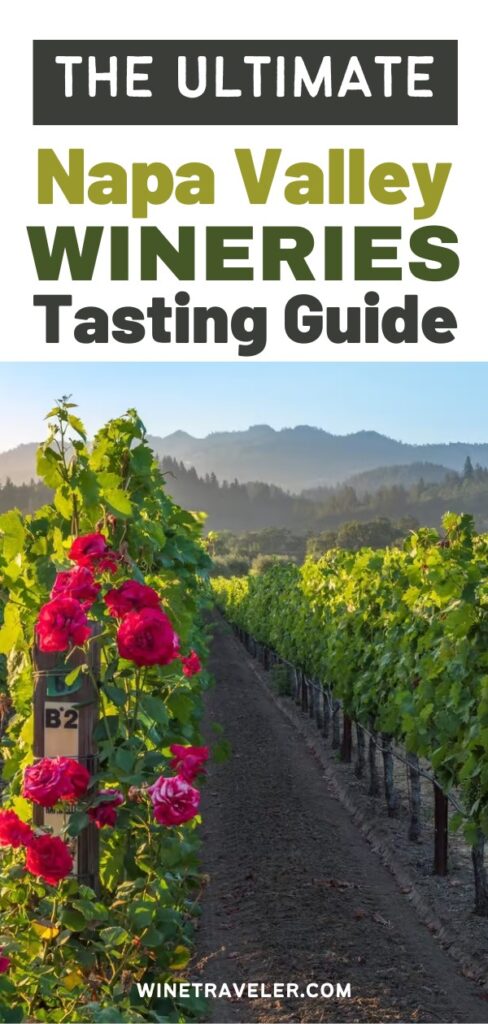
Frequently Asked Questions about Napa Wineries
What is the best time of year to visit napa wineries.
The best time to visit Napa wineries is during the spring (March through May) and fall (September through November) months, when the weather is pleasant and the scenery is spectacular. Spring offers vibrant wildflowers and lush green landscapes, while fall showcases the grape harvest and the changing colors of the vine leaves. Summer is also a popular time, but can be crowded and hot, while winter is quieter and offers a more intimate experience.
How do I plan my visit to Napa wineries?
When planning your visit to Napa wineries, start by researching the wineries you’d like to visit, as there are over 400 to choose from. Consider factors such as the types of wines you enjoy, the winery’s ambiance, and any special experiences they offer. We list most of the best wineries in Napa and group them by location to create an efficient itinerary. Read our detailed guide to help you plan your trip. Keep in mind that many wineries in Napa require reservations for tastings and tours, so be sure to book ahead.
How many Napa wineries should I visit in one day?
To fully enjoy your Napa wine tasting experience without feeling rushed, it’s generally recommended to visit 3-5 wineries in one day. This allows ample time to savor the wines, explore the properties, and take breaks for meals or relaxation. However, be sure to have a designated driver on hand or hire one of our preferred drivers or private tours referenced in this guide.
What are the costs associated with wine tasting in Napa?
Tasting fees at Napa wineries can vary widely, typically ranging from $25 to $50 per person, with some high-end or exclusive wineries charging even more. Some wineries offer tastings that are refundable with a wine purchase, while others may waive the fee for wine club members. Guided tours, food pairings, and special experiences may come at an additional cost. To manage expenses, consider setting a daily budget for tastings and prioritize wineries that best align with your preferences.
How should I get around Napa Valley when visiting wineries?
There are several transportation options for exploring Napa wineries, including self-driving, hiring a private driver or tour guide, joining a group wine tour, or using a designated driver service. Each option has its advantages and drawbacks, but it’s crucial to ensure responsible and safe transportation, especially if you plan to consume alcohol during your tastings. We give Winetravelers plenty of options in this guide to get around to Napa’s best wineries safely. Ask us any questions or for recommendations in the guide’s comments.
You are reading “The Ultimate Guide to Wine Tasting in Napa: Best Napa Wineries & Wine Tours for 2024” Back To Top
napa wine tours, napa wineries, hotels and restaurants, things to do in Napa: trending destinations in California
If you enjoyed this guide, make sure you register to become a Winetraveler for free! You’ll get access to all of our content and receive useful guides and inspiration for travel around the world. Be sure to follow along with us on Instagram as we continue to feature more exciting destinations.
Get Articles Like These Directly in Your Inbox!
Subscribe to Winetraveler and receive notifications when new travel guides and itineraries are published. It's free!
Email Address
Sign Me Up!
Login to view more Articles
Leave a comment, ask a question or share a review cancel reply, in this article, you might also like, how to go wine tasting in california’s edna valley & san luis obispo wine country, expert guide to wine tasting in lodi california (2024), 5 exciting ways to go wine tasting in croatia, best wineries to visit in rías baixas, galicia, 11 seriously awesome u.s. road trips you can take right now, 10 top us national parks to visit during the winter, 15 best restaurants in san francisco to wine & dine, wineries nearby, weis vineyards, dr. konstantin frank winery, pahrump valley winery, daou vineyards & winery, cheers to free membership.
Explore new paths. Travel expertise from locals and wine industry experts.
Get free access to all the goods:
- Exclusive articles
- In-depth itineraries
- …and more

- Restaurants
- Accommodation
- Things To Do
- What’s On

Private Wine-Tastings: 15 Memorable Experiences in the Cape
By Malu Lambert

Elevate your palate.
To gain access to some of the Cape’s most authentic tasting rooms, you’ll need to make an appointment. Perfect for oenophiles searching for personalised experiences, these private wine-tastings provide an intimate glimpse into the winemaking process, often led by the winemaker or a senior member of the cellar team. You’ll get to savour bespoke tastings of premium wines while gaining insider knowledge and stories directly from the source.
These are the ones that score top marks (listed in alphabetical order below).
Badenhorst Family Wines

Founded by cousins and Swartland raconteurs Adi and Hein Badenhorst in 2008. Together they restored a neglected cellar on the historic Kalmoesfontein farm, where they practise hands-off, traditional winemaking for authentic, characterful wines. AA Badenhorst Wines are particularly well known for their takes on chenin blanc, syrah and grenache, in fact the country’s oldest vineyard of the latter is rooted here, planted in 1952. The experience Tastings are conducted by the legend Adi Badenhorst himself, or another member of the winemaking team. Wednesday + Friday, 11.30am. Cost R175 for a tasting of six wines, inclusive of one older vintage. R250 for the daily farm lunch. Good to know Also available are tastings on Thursday prior to the weekly pizza night. Says chef Matt Manning of Culture Wine Bar Kalmoesfontein has to be one of my favourite places to visit. Listen to Adi talk you through what makes his fantastic range of wines so rock ’n roll (perhaps the rock he plays to his wines while in the tank?) then stay for pizza served hot from his proper pizza oven. We love to stay over at Die Koringhuis on the farm, just book well in advance as his cottages are often fully-booked (for good reason!). Contact 022 125 0116, [email protected] Where to find it Jakkalsfontein Road, Malmesbury. Enquire Now
Arendsig Handcrafted Wines

Arendsig Wines is celebrated for its single-vineyard, handcrafted wines. Family-operated winemaker and owner Lourens van der Westhuizen is passionate about the essence of single-vineyard wine. “My philosophy is to create great single vineyard wines from unique soils, climate and location,” comments Lourens. “The vineyard’s location in relation to the sun and wind direction, as well as a holistically favourable climate, influences the expression of each block.” Located in the scenic Robertson Valley, the farm also offers self-catering farm cottage accommodation, just 100 metres from the Breede River. The experience Join winemaker Lourens for a “very interactive tasting”. During harvest time see his beloved vineyards, and cellar, in action. Cost Complimentary. Good to know Ask to see the old clay cellar. Says chef Matt Manning of Culture Wine Bar I love visiting winemaker Lourens at Arendsig. He gives you a personal tour of his cellar and if you’re lucky, will even treat you to a barrel tasting. They’ve also recently upgraded their self-catering cottages with wood-fired hot tubs, so it is a firm favourite with my entire family! Contact 084 200 2163, [email protected] Where to find it R317 Stormsvlei, Wakkerstroom, Robertson Enquire Now
Atlas Swift

Family-run, Atlas Swift is a hidden gem of Franschhoek. Winemaking couple, Welma and Martin Smith focus on premium expressions of chardonnay and cabernet sauvignon. Their fascinating chardonnay project spans five different terroirs, and they apply exactly the same winemaking technique to create five unique wines that showcase each. “The range of wines is a culmination of hard work, perseverance and the multiplicity of distinctive origins, cultures, memories and energy,” shares Welma. The experience Enjoy a deep dive into chardonnay, or the ‘informal tasting’. The wines come served in Riedel glassware. A tea experience is also available as a non-alcoholic option, and they offer cheese and charcuterie platters as well as plant-based platters. Private dinners are also an option; Martin himself will braai for you. Cost Chardonnay Journey, R190 per person. Informal tasting, R160 per person. Good to know While you’re there take a squiz at the Ford car collection on the property. Contact 071 349 1773, [email protected] Where to find it La Vigne Estate, Franschhoek Win Stand a chance of winning a tasting for four and a case of wine. Enter here . Book through DinePlan
Boekenhoutskloof

“The whole idea behind our tastings is a generosity of spirit, we want to give people an experience,” says proprietor Marc Kent. Something of a hidden gem in busy Franschhoek, the estate is hidden in the furthest corner of the valley among leafy trees. The interior is modern and welcoming, and the wine cellar itself is one of the most state of the art in the country. The experience Visits are welcomed at 11am on Tuesday and Thursday (excluding public holidays), limited to 12 guests and hosted by the winemaking team. Older vintages are often shown alongside current ones. Crystal stemware is the order of the day and only wines from the premium range are served. Cost Complimentary Good to know There is often a waiting list, so book ahead. Contact [email protected] Where to find it Excelsior Road, Franschhoek Enquire Now
Capensis Wines

Home to the highest vineyards in Stellenbosch, the vines here reach 620 metres above sea level, and offer views right across the Banhoek valley. Capensis, meaning “from the Cape”, are chardonnay specialists and focus solely on the noble grape. The venture is the vision of Barbara Banke of US wine company Jackson Family Wines. The experience Sip fine chardonnay in hand-blown stemware at the beautifully-appointed Kliphuis, the home of Capensis at Fijnbosch Vineyards. You will be treated to older vintages and special bottlings, too. Cost R395 per person. Good to know Lunch at the Kliphuis, catered by a private chef, is available by special request. Says Tal Aviram of The Wine Agent If you are a chardonnay lover, you have to experience Capensis at least once in a lifetime. The chardonnay is world-class; super fruity, finely balanced and matured in oak. The tasting room is a beautiful open space during summer, and cosy and warm with a fireplace in winter. The hosts are very knowledgeable and welcoming, which adds so much to the experience. Contact 064 968 7845, [email protected] Where to find it Fijnbosch Vineyards, Zevenrivieren Road, Banhoek Valley, Stellenbosch Book Now
De Kleine Wijn

Small-batch winemaking and creativity reign supreme for the innovative minds of De Kleine Wijn. The micro-winery is run by winemaker Wynand Grobler and his wife, Anya. They source grapes from prime sites across the Cape for their alternative range. They are dreaming big and have recently acquired a farm in Tulbagh. “The last farm, right against the Witzenberg Mountains just outside of Tulbagh,” confirms Wynand. “It’s an amazing location and we are in the process of developing it for guest accommodation as well as a restaurant.” The experience Soak in the 360-degree mountain views while tasting through their small batch wines. This will be available from December 2024. Book ahead. Cost R200 per person Good to know A new restaurant, in partnership with Michelin-starred chef Peter Gast of Graphite in Amsterdam, is on the cards. Contact [email protected] Where to find it Drie Fonteine, Weltevrede Road, Tulbagh Enquire Now
De Trafford Wines

De Trafford Winery is set at the top of a dramatic valley above Stellenbosch, 380 metres up between the Stellenbosch and Helderberg mountains. Established in 1992 by architect David Trafford and his artist wife Rita, it is renowned for its high-quality, small-batch wines. “What sets us apart is the hands-on artisanal nature of our production and the fact that either myself, Cisca Louw or Hendry Hess, who has been my cellar assistant since 1995, present the wines and take guests on a vineyard walk,” shares David. The experience The tasting room is within the cellar. “If we are busy labelling, bottling and so on, the guests can see that happening,” says David. “During harvest, they must weave their way through the action to get to the tasting room! Cost Current Tasting: R250 Vintage Tasting: R500 Vineyard Walk: R350 (includes a tasting of current vintages) Good to know De Trafford is open to the public without prior booking on Saturday, 10am – 3pm. Contact 021 880 161, [email protected] Where to find it Mont Fleur Farm, Blaauwklippen Road, Stellenbosch Enquire Now
Druk My Niet

At just 24-hectares, Druk-My-Niet, meaning ‘don’t squeeze me’ is a small wine farm located on the foothills of the Hawekwa Mountains. Situated in a biosphere reserve, off the beaten track in Paarl, they are known for their sustainable viticulture practices – and have the surrounding fields of fynbos to prove it. Commanding idyllic valley views, guests can enjoy wine tastings and cellar tours. And should you want to linger a bit longer… Why not book accommodation in one of the charming, self-catering cottages? The experience Private tasting with the owner, Dorothee Kirchner or winemaker Marcus Milner. Cheese and charcuterie platters are available upon request. Cost Estate Tasting: R180 Premium Tasting: R350 Good to know Bookings are for a minimum of two. A German eatery in tribute to the Kirchners’ heritage is in the pipeline. Contact 021 868 2393, [email protected] Where to find it Bodal Road, Daljosafat, Paarl Enquire Now
Journey’s End Vineyards

Journey’s End Vineyards commands a prime position in the Schapenberg Hills with stunning views of the Atlantic Ocean and rolling mountain ranges. Since they took over the vineyard 27 years ago, the Gabb family have been ethically and sustainably producing top-quality wines. The vineyards also benefit from the cooling south-easterly wind, which comes in from nearby False Bay. Winemaker Mike Dawson uses progressive methods in the cellar, including a minimal intervention philosophy, carbonic maceration and fermentation and ageing in amphorae and concrete eggs. The experience A wide variety of options are available and tastings are conducted by a winemaker. They take place Monday – Friday, 10am – 3pm. Cost Precision Range: R295 per person (4 wines) Varietal Range: R195 per person (6 wines) Tales Range: R125 per person (5 wines) Cellar Tour: R250 per person (with wine tasting: barrel, tank, and 3 wines) Good to know Expect to see dramatic views of Cape Point, Hangklip and False Bay, as well as peacocks roaming and fish eagles soaring. Contact 021 200 2698, [email protected] Where to find it Farm 25, Sir Lowry’s Pass, Somerset West Enquire Now
Keermont Vineyards

One of Stellenbosch’s best-kept secrets, Keermont is hidden in a naturally-formed amphitheatre between the Helderberg and Stellenbosch mountain ranges. “You will feel lost at first, but eventually you will find us,” laughs longtime winemaker Alex Starey. The estate has a reputation for producing fine, award-winning wines. A member of the Integrated Production of Wine (IPW) scheme, they farm and produce wine in a sustainable manner with over 100-hectares dedicated to conservation. Keermont is owned by Mark and Monica Wraith who live on the farm with their four children. The experience Hosted by a member of the small team, tastings are offered Monday – Thursday, and guests can sample a flight of their current releases (7 wines) as well as the site-expressive Single Vineyard Series. Cost R250 per person, R50 extra to add the Single Vineyard Series to the tasting. Cost of tasting waived upon purchase of a six-bottle case. Opening times Friday, 10.30 – 1.30pm; Saturday, 10am – 3pm Good to know Suitable to visit in any weather, from the outside patio with mountain views, and by the fireplace for cold, rainy days. Cellar tours are available upon request. Contact 021 880 0397, [email protected] Where to find it Keermont Vineyards, Upper Blaauwklippen Road, Stellenbosch Enquire Now
Luddite Wines

This family-run winery calls pastoral Bot River home. Established in 1999 by Niels and Penny Verburg, daughter Alice has also joined the winemaking team. Known for their commitment to sustainability and minimal intervention philosophy, the winery focuses on producing high-quality, handcrafted wines. Luddite is particularly celebrated for its shiraz. “We like to keep things as personal as possible,” says Alice in reference to the tasting experience. The experience The tastings are always conducted by one of the family. Picnics and platters are available, too. Cost On request Good to know Their slogan, “Technology and mechanisation will never be a substitute for passion” perfectly sums up the spirit of this authentic estate. Says chef Matt Manning of Culture Wine Bar I always make sure I pop by their warm and cosy tasting room if I am going past Bot River. Contact details 082 877 4011 (Alice), [email protected] Where to find it Van Der Stel Pass Road, Bot River Enquire Now
Mullineux Wines

Founded in 2007 by husband-and-wife team Chris and Andrea Mullineux, this Swartland icon is renowned for producing fine, terroir-driven wines. The winery particularly excels with syrah and chenin blanc, and employs minimal intervention winemaking practices. The property is in a micro-pocket of the Swartland, the Riebeeksrivier valley, which is often much cooler than the rest of the region with ancient soils of deep schist threaded with veins of quartz, making it prime for quality wine-growing. The vineyards at Roundstone farm are treated organically and are in the process of becoming certified Regenerative Organic. The experience The Roundstone Room is their new tasting venue. It has been designed for intimate gatherings and can seat 12 people. Tastings take place from April to December, on the first Friday of each month. Cost Mullineux Signature Tasting: R160 per person. Mullineux Single Terroir Tasting: R550 per person. Good to know Subject to accessibility and season, tasting appointments may include a walk in the vineyards. Contact 021 492 2224, [email protected] Where to find it Riebeeksrivier Road, Roundstone Farm, Riebeek-Kasteel Enquire Now
Storm Wines

Tucked in a mountainous corner of the Hemel-en-Aarde , find the intimate Storm Wines cellar. Here Nathalia and Hannes Storm craft their terroir expressive chardonnay and pinot noir. The winery is now over a decade old, before starting out on their own Hannes honed his craft at Hamilton Russell Vineyards. In 2009 the Hemel-en-Aarde was divided into three separate wards, and Storm Wines are the only producer to make wines across all of them. The experience A tutored tasting with Nathalia and Hannes Storm. Cost Information provided on request Good to know They are the only producer to showcase one pinot noir from each appellation in the Hemel-en-Aarde. Contact [email protected] Where to find it Hemel-en-Aarde Valley, Hermanus Enquire Now
Taaibosch Wines

In the lofty Helderberg, find Taaibosch Wines. They produce just one wine, the Crescendo, a cabernet franc-led blend. Revived in 2018, the wine is based on the famed wine of the same name, made then by Chris Keet in the late 1990s to the 2000s at what was then Cordoba. The property is now owned by the Oddos, a French family with various winemaking ventures. The experience Wine club members are treated to a vineyard and cellar tour, followed by an intimate tasting with winemaker, Schalk-Willem Joubert. Cost Join the wine club, or purchase a minimum of 12 bottles to gain access to a tasting. Good to know Le Chant Wines, the more accessible sibling brand, will soon have a tasting room open to the public. Contact 021 855 3744, [email protected] Where to find it Cordoba Road, Helderberg Rural, Stellenbosch Enquire Now
Tempel Wines

It’s named for an historic Cape Dutch cottage on the farm, built in 1784, that was known in the community as the Jooden Tempel. Situated between Paarl and Wellington, the farm is owned and operated by Belgian Tom Heeremans, who is very hands-on. The property also plays host to luxurious accommodation that borrows from the Cape Dutch vernacular. “We want to give you a personal experience,” says Tom. Tastings can also take place in other languages too, such as French, Dutch and Russian. The experience In the vibrant tasting room, experience the estate’s six wines in the company of either Heeremans, or another member of the small team. Cheese and charcuterie platters are available on request. Open Monday – Saturday, 11am – 4pm. Cost R200 per person. Good to know Be dazzled by the colourful street art murals in the wine cellar, where you can also taste wine from the barrel, or concrete egg. Says US wine expert Eric Matkovich, founder of Cellar X There is not a more fun guy to taste with than Tom Heeremans. He’s making some lovely wines and getting noticed. Contact details 079 833 9617, [email protected] Where to find it Tempel Wines, Nuwedrif Road, northern Paarl Enquire Now
Other recommended wine-tasting experiences
Avondale wine.
“Avondale offers a by-appointment-only eco-tour, where you can explore their biodynamic approach to winemaking throughout their farm, including their famous duck mobile, followed by a wine-tasting at their gorgeous tasting room. Stay for lunch at Faber!” – Chef Matt Manning Where Paarl Contact 021 863 1976, [email protected]
Sijnn Wines
“Book an appointment with Charla Bosman, one of SA’s best winemakers, and see what makes her wines so special.” – Chef Matt Manning Where Malgas Contact 068 769 7661, [email protected]
De Toren Wine
Book the by-appointment-only Icon Tour & Tasting, a 1.5-hour tour where a senior member of the team shares De Toren’s unique winemaking philosophy and process, and you get to taste all five of its top wines. Where Stellenbosch Contact 021 137 0090, [email protected]
Discover all of the Cape’s hidden gems – subscribe to our weekly newsletter .
Disclaimer:
The Inside Guide has made every effort to ensure that the information in this post was correct at the time of publication. However, we do not assume any liability caused by errors, such as price, cost, time, and location.
Time of publication: 20 August 2024
Add new comment
Click here to cancel reply.
Please note:
One response to “private wine-tastings: 15 memorable experiences in the cape”.
Dominic Anschutz
Oldenburg has to be here, it’s an icredible experience. Superb wine with amazing staff. Adrian, Nic & Stefan have created a jewel in the banhoek valley It’s an absolute must!
Get the Inside Scoop
Get The Inside Guide delivered straight to your inbox, and never miss out on what's hot in Cape Town
- Let us know you're human

IMAGES
COMMENTS
Wine tourism, also known as enotourism and vinitourism, is a focused branch of food tourism which is specifically to do with wine. It is all about getting to know the world of wine as you travel. Activities typically include vineyard and winery tours, getting to see the wine production line and (of course!) wine tasting.
Wine tourism is a form of tourism that involves traveling to wineries and vineyards to learn more about the wine production process, taste different wines, and enjoy the local attractions. It can also be described as a type of agritourism — a branch of tourism focused on agriculture and nature-based activities.
Fabulous experience. It was our lucky day - needing a tour in English, the gal giving the tour asked for assistance from one of her colleagues who happens to handle quality control for the winery. ... "Wine Tourism" generally includes visiting wineries and wine regions with the intention of tasting, consuming, and purchasing wine. Wine ...
In conclusion, wine tourism offers a unique opportunity for travelers to explore the world of wine, connect with local cultures, and savor the flavors of different wine regions. By understanding the significance of wine tourism, familiarizing yourself with key terms, and following tips to enhance your experience, you can make the most of your ...
Deciding on or mixing up Wine Tours vs. Wine Tastings is also a great way to narrow down your wine vacation experience. First, let's define a wine tour vs. a wine tasting. Wine Tours: Generally, a guided tour by a winery employee or owner who takes you through their grounds and or vineyard property, which also includes tastings at the end.
In a nutshell, wine tourism is a type of food tourism aimed at getting to know and appreciate the universe of wine. The routes and tours are focused on a single objective: get to know regions dedicated to wine production and taste their wines. This type of food trip is designed for people looking to delve into the history, traditions, and ...
The Barrel Room Tasting. For the wine enthusiast with an extensive curiosity into how wine is both produced and aged, the barrel room tasting offers the unique experience of tasting a wine before it's bottled and typically prior to when it has reached its full maturity / potential. RELATED: An In-Depth Guide to Tasting Wine Like a Pro.
A wine tour in Spain offers more than just a tasting experience; it's an invitation to explore the landscapes, local cuisine, and the art of wine making, guided by local knowledge and expertise. Wine tours in provide #Winetravelers with freedom from the concerns of planning or logistics.
Wine tourism is a type of tourism that involves traveling to wine-producing regions to learn about wine and the wine-making process. It can also include participating in wine tastings, attending festivals and other events, and visiting vineyards and wineries. During your travels, you may visit the homes of famous winemakers, tour cellars and ...
Also called enotourism, wine tourism or vititourism, this special interest tourism is about traveling with the aim of participating in activities surrounding wine. For example going to a wine festival, visiting a vineyard, or attending a wine and food pairing workshop. ... It is an emerging experience invoking all of our senses, which makes it ...
Wine tourism, a unique experience that blends the passion for wine with the beauty of wine regions, has become a fascinating travel trend around the world. In this article, we will explore in detail what wine tourism is and how Chile has emerged as one of the leading destinations in this form of travel and tourism.
Examples of wine tourism experiences. Wine tourism experiences offer a captivating journey of the senses, allowing travelers to delve into the intricate world of viticulture. While wine tastings at picturesque vineyards and guided visits to wineries might be the most popular and essential activities, there is an abundance of other ventures that ...
There's rapid evolution happening in the wine tourism industry, as the experience and expectations of wine drinkers have changed. Fifteen years ago, most winery visits would feature a quick ...
Experience. Wine tourism is all about giving people a memorable experience. Experience based tourism, in fact, allows tourists to be fully involved in the visit and to be a leading actor in the choice. It is also able to start up a process, gradually increasing the tourist's awareness to become an active tourist (Hall et al., 2007; Lemmi ...
Whilst Eno-tourism (Wine Tourism), as a sub-type of Gastronomy Tourism, refers to tourism whose purpose is visiting vineyards, wineries, tasting, consuming and/or purchasing wine, ... gastronomy has become a central part of the tourism experience. Against this background, food tourism has gained increasing attention over the past years. ...
Wine tourism is a great experience, visiting a wine country deserves a wine tour and wine tasting, even for the not so wine lover. Contact our Team: +351 22 6102075 Best Sellers
Obviously, this is the fun part! A standard wine tasting tour will have you sampling anything from one to six wines, and some may even have small bites of local meats and cheeses to accompany your tasting. Tasting sizes are often around half the amount of a regular glass of wine. See Also: 18 Most Affordable Places to Travel for Under $18 a Day.
6.1 Introduction: Conceptualizing Wine Tourism, State of the Art. Charters and Ali-Knight (2002), defined wine tourism as a travel for the purpose of experiencing wineries and wine regions and their links to lifestyle, and as encom-passing both service provision and destination marketing. Earlier, Hall (1996) putted the focus of wine tourism on ...
Here's how you can segment the types of wine tourists: The Wine Geeks: Want to know everything. Wine is the sole purpose. The Gastro-Tourist: Food and wine is an important element. The Passing ...
Reservations can easily be made online HERE or by calling 800-686-6272, we are available daily 8:30-4:30 PST for personal assistance.Our hours of operation for tastings are 10am- 6pm, daily and the last reservation is at 5pm to allow for a 60-minute seated experience before closing.
Champagne wine region is situated in the North-East of France and it is a large agricultural and industrial area. The territory is famous for its sparkling wines, which took the name from the region. In Champagne wine land, they produce different, unique bubbles, which is a result of their exceptional conditions of the region and the winemaking ...
The main drivers for sustainable wine tourism are to build trust and reputation (57%), to increase visitor satisfaction (55%) and to make the world to a better place (55%). The main barriers for sustainable wine tourism are lack of financial resources (48%), lack of human resources (35%) and lack of infrastructure (35%).
Domaine Terre de Mistral. Chemin du Pavillon, Route de Peynier, 13790 Rousset, France. This winery offers a holistic Provencal experience. Winetravelers can enjoy wine and olive oil tastings, guided tours of the vineyards, and even participate in grape harvests if you visit during the late summer/fall season.
The best part is that you can reach McMinnville and the wine country with an hour's drive from Portland International Airport. Here are our picks for the best places to stay, eat, and drink in McMinnville. Where to stay in McMinnville, Oregon. The Tributary Hotel provides a luxe experience in McMinnville, Oregon — Photo courtesy of George ...
Embark on a three-hour tasting journey through Porto's finest wine cellars, starting at the historic Burmester Wine Cellar and continuing to a 250-year-old family-owned winery. Savor 10 exceptional port wines, discover the rich history of the Douro Valley, and end your tour at one of the region's largest exporters. With an expert guide, immerse yourself in the traditions of Vila Nova de Gaia ...
Wine Tourism Market Size & Trends. The wine tourism market size was estimated at USD 46.47 billion in 2023 and is expected to grow at a CAGR of 12.9% from 2024 to 2030. This growth is driven by increasing consumer interest in unique and immersive wine experiences, expanding global travel, and rising investments in wine-related tourism ...
6150 Silverado Trail, Napa. (707) 257-5790. Why Guests Love It: Historic Winery, Beautiful Views, Exceptional Service. Stags' Leap is another legendary Napa winery and is a must for those wanting to taste through the best the valley has to offer.
The experience Wine club members are treated to a vineyard and cellar tour, followed by an intimate tasting with winemaker, Schalk-Willem Joubert. Cost Join the wine club, or purchase a minimum of 12 bottles to gain access to a tasting. Good to know Le Chant Wines, the more accessible sibling brand, will soon have a tasting room open to the public.
We can all be winejudges and the only thing that matters is the love for wine. The experience takes place in our private cellar, an ideal environment to introduce you to the wines of Mallorca. ... Wine Tourism Global is a Swedish limited company register number 559307-3066. Contact Us. Wine Tourism Global (559307-3066) Stockholm, Sweden
Explore Tasmania's food and wine: tour wineries in Tamar Valley, visit farm gates, dairies, oyster farms, markets, and distilleries for tastings and meet the makers.